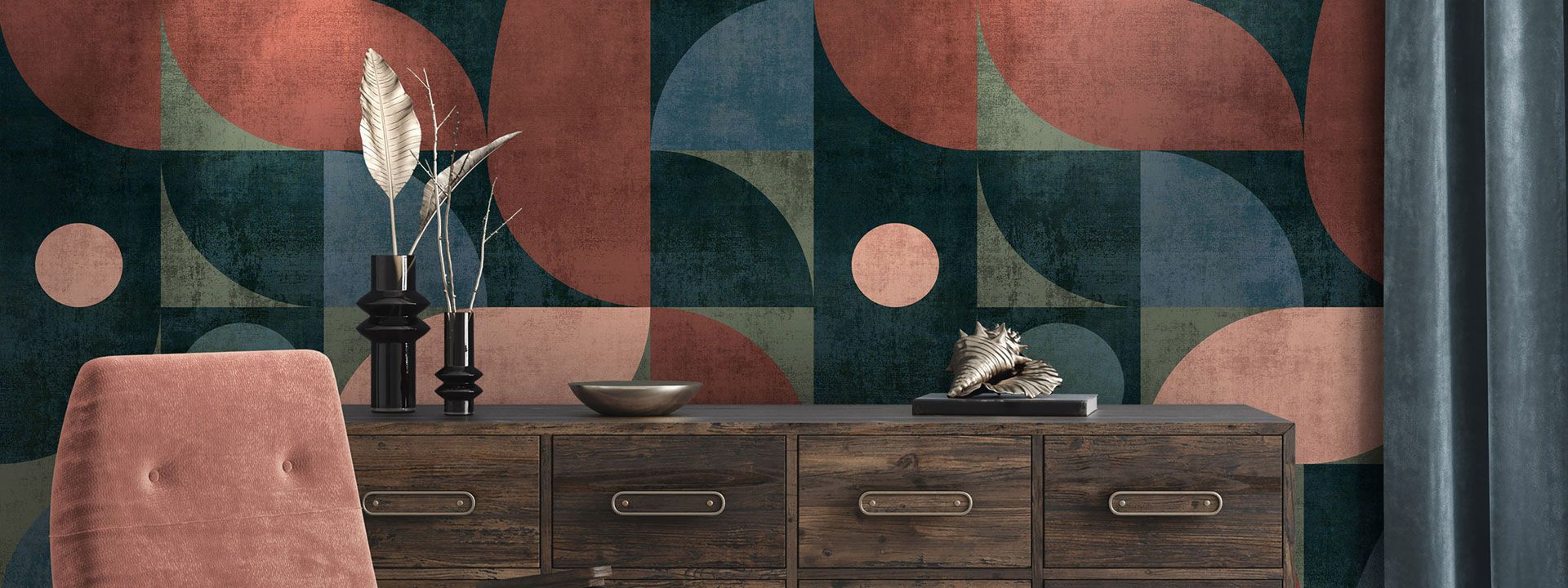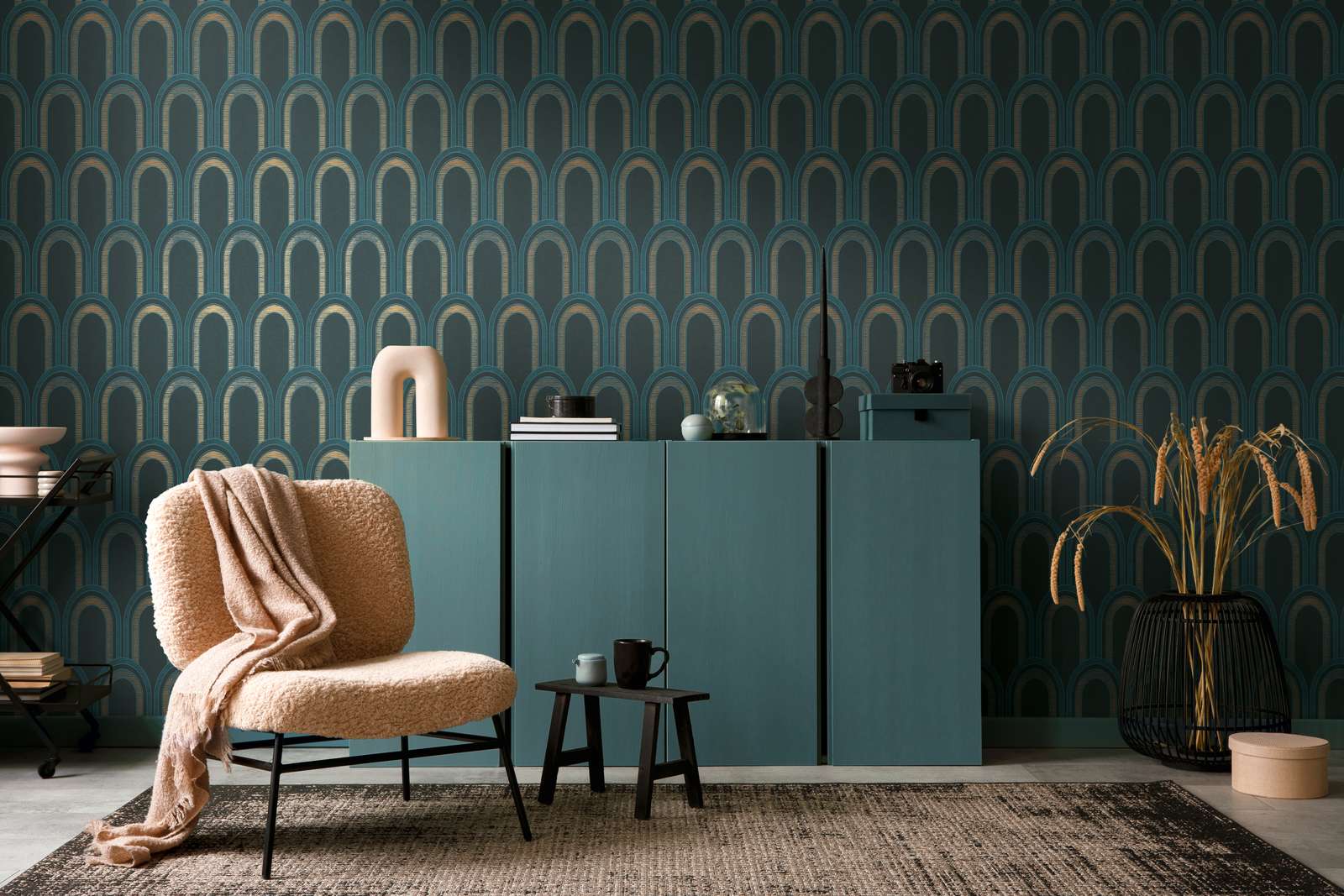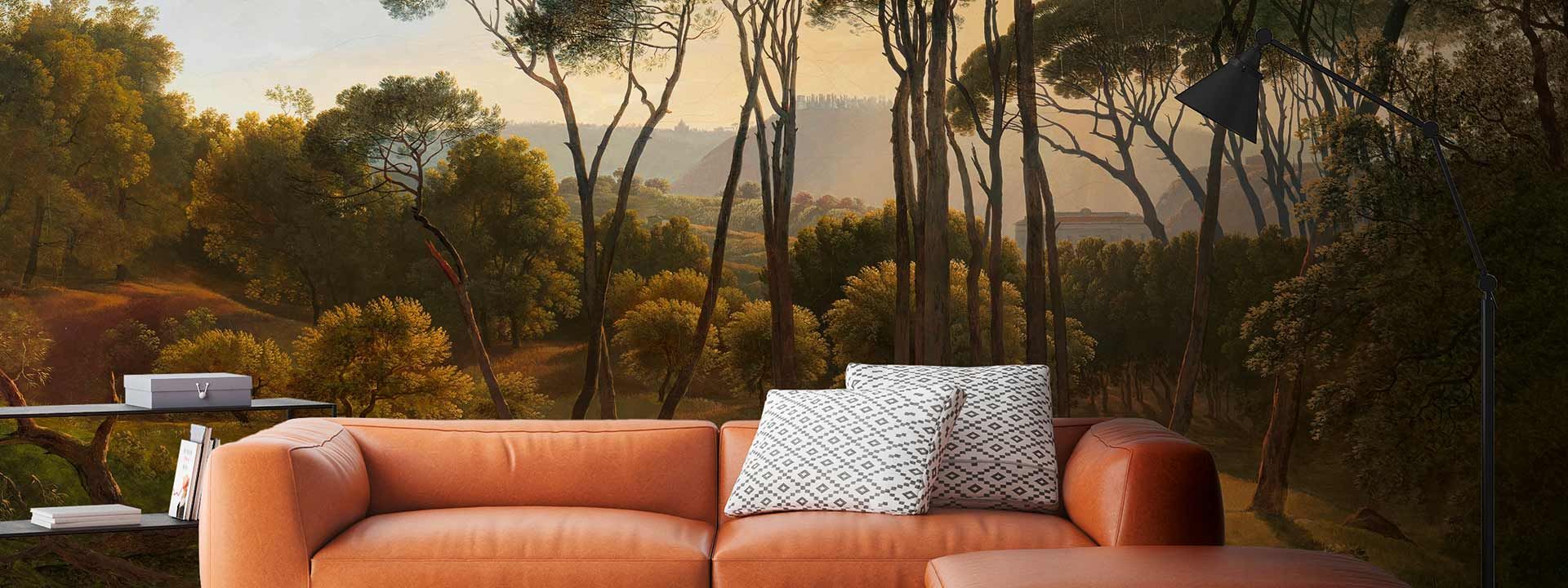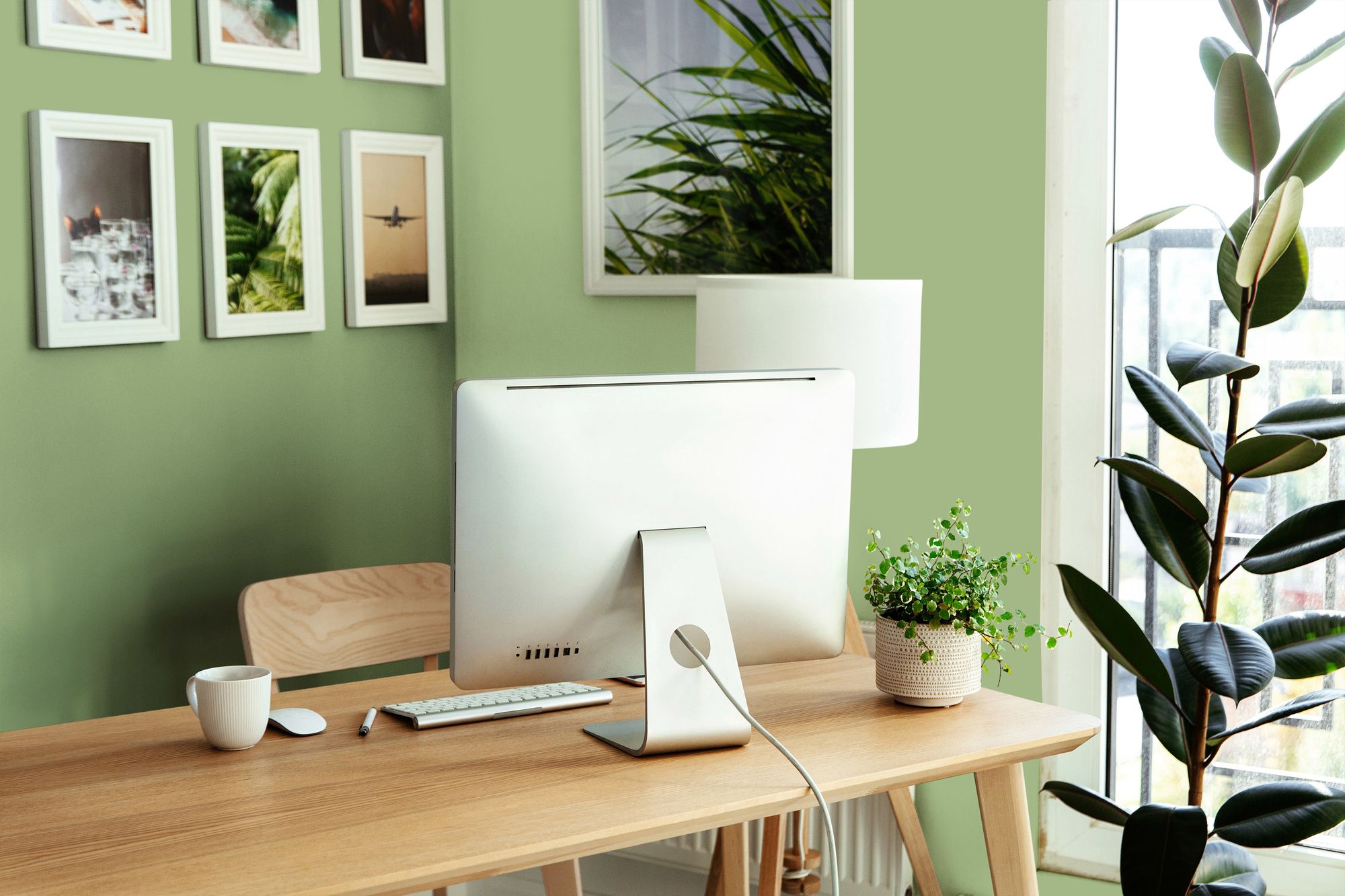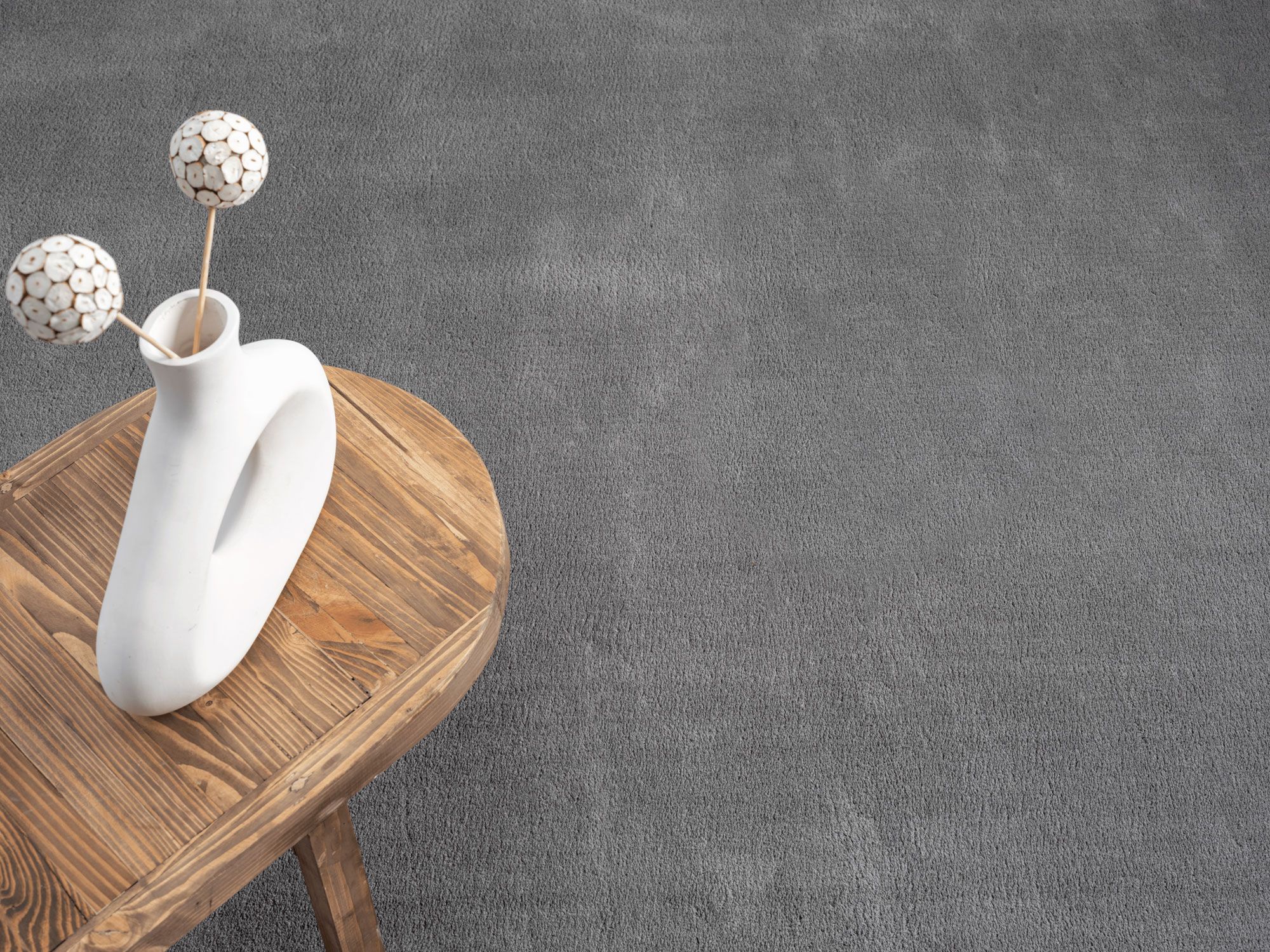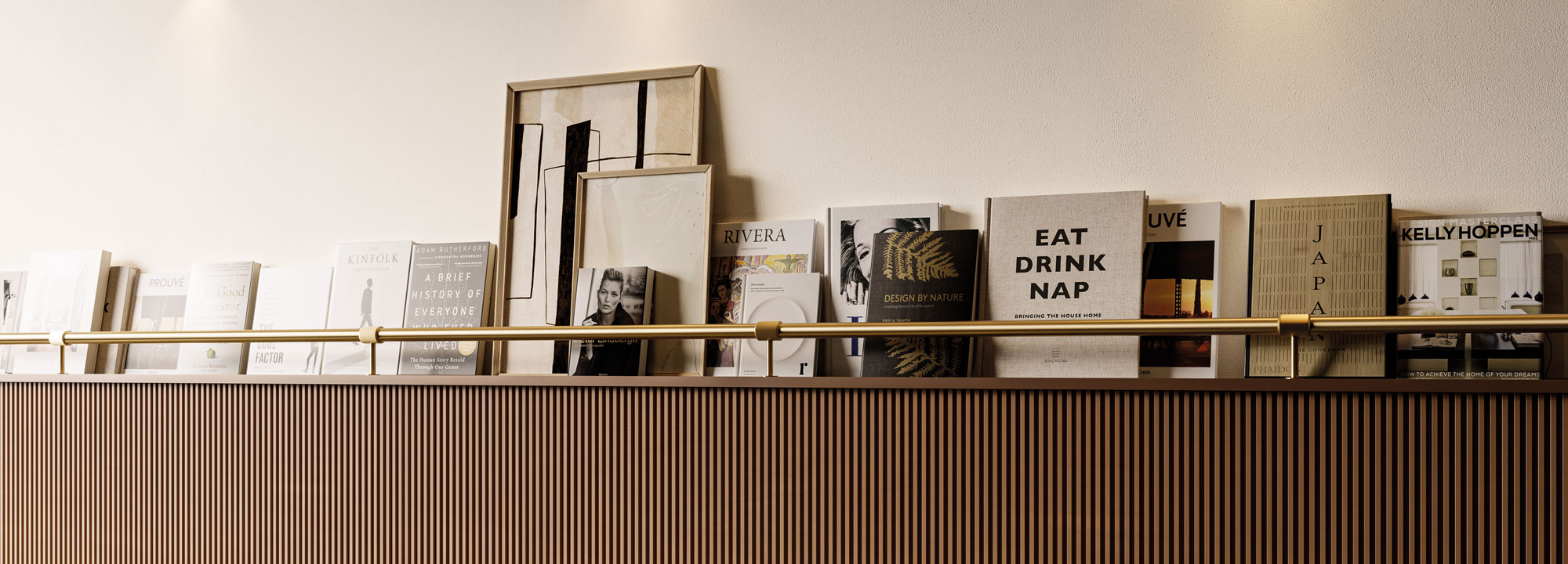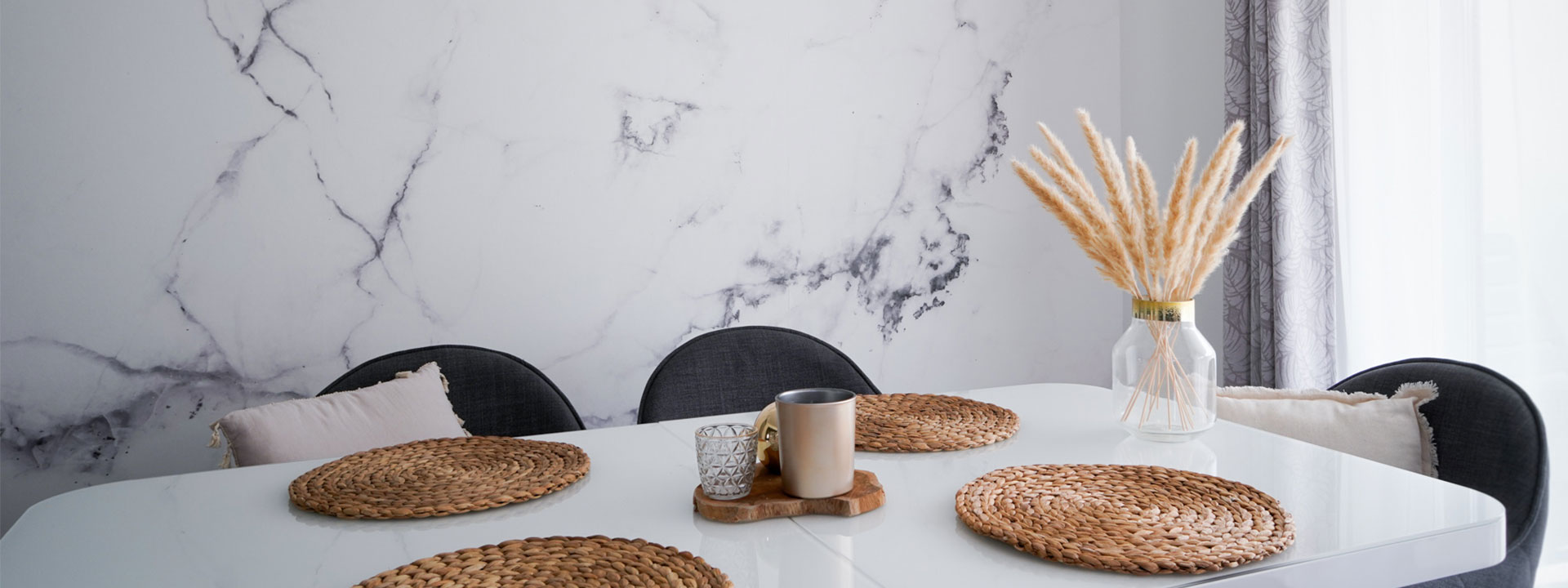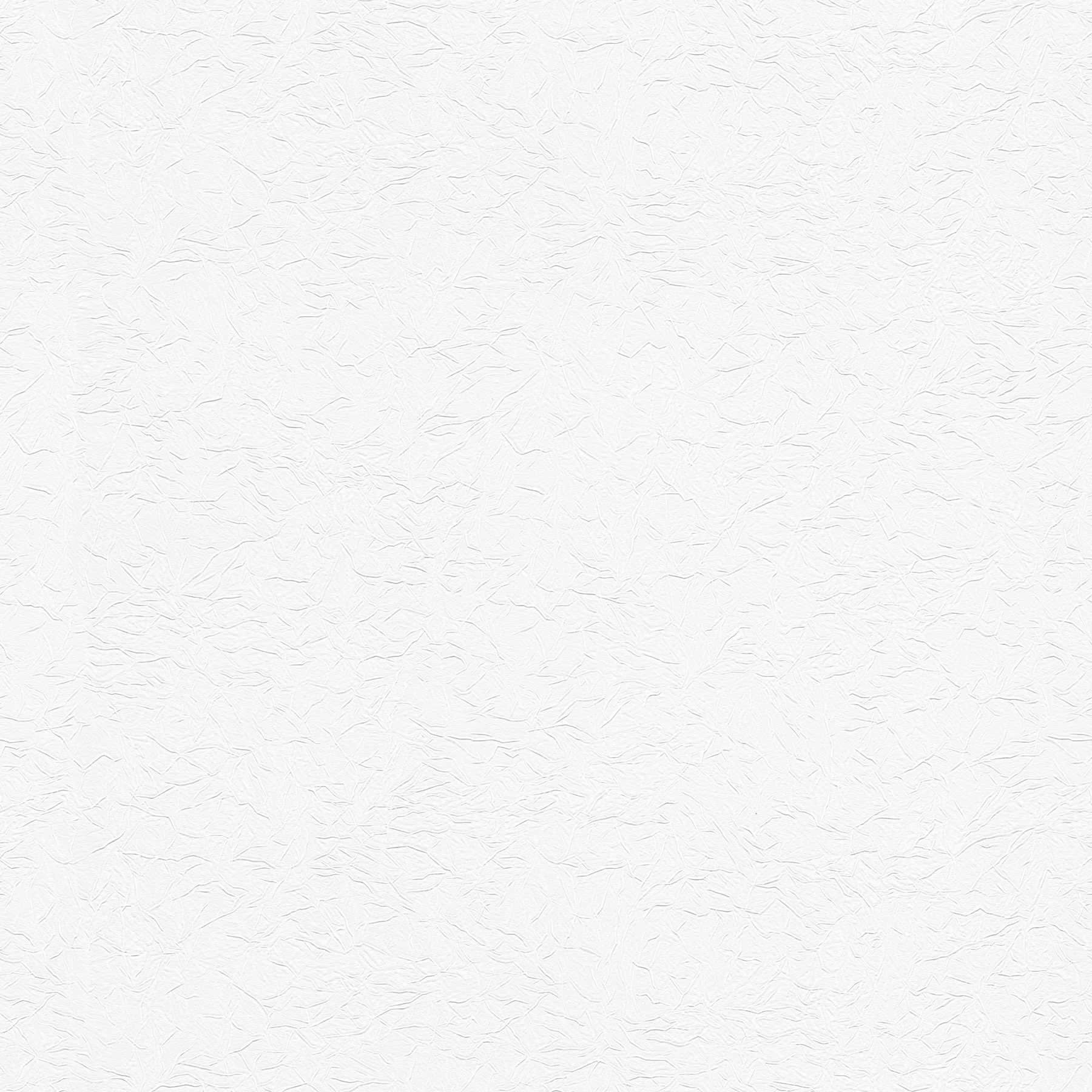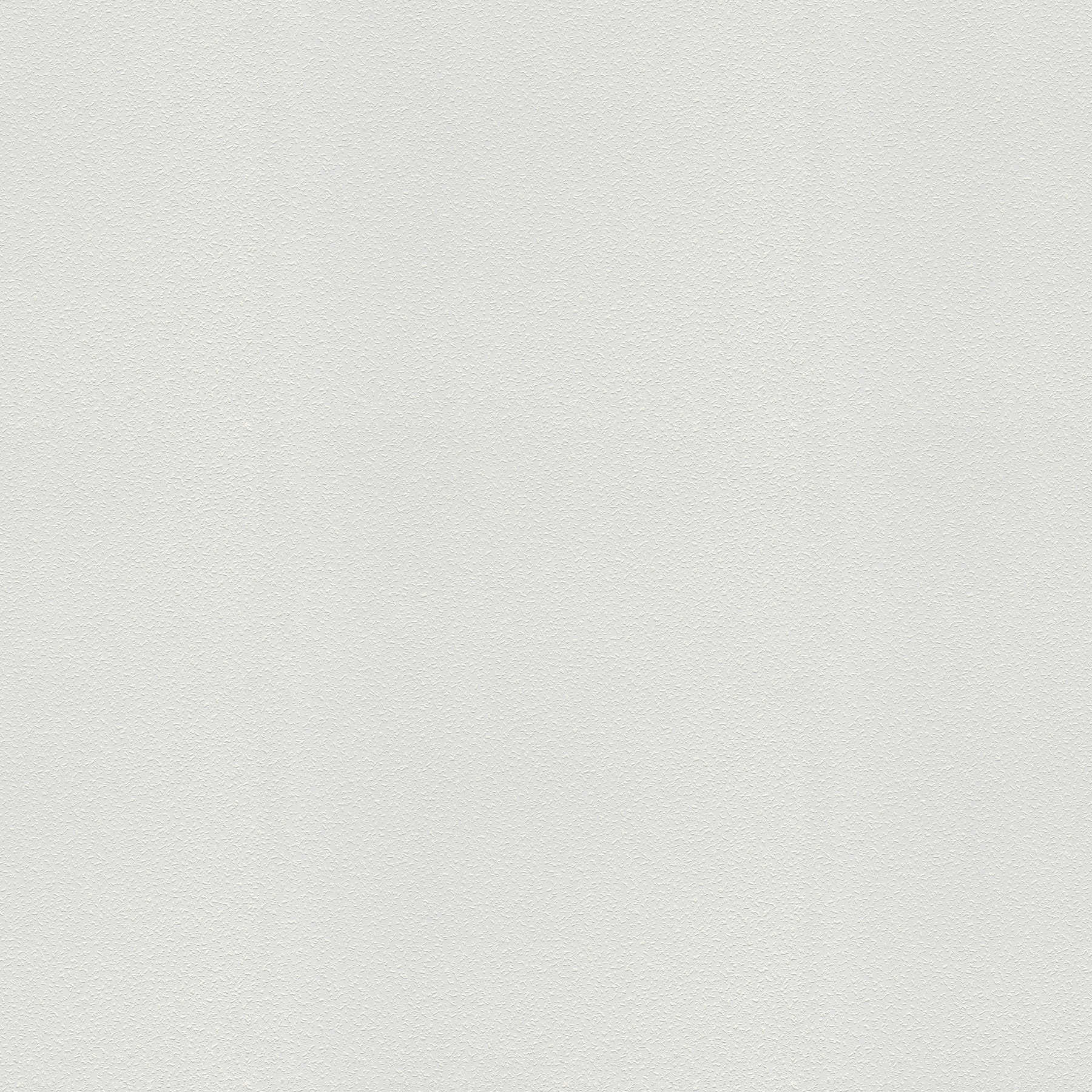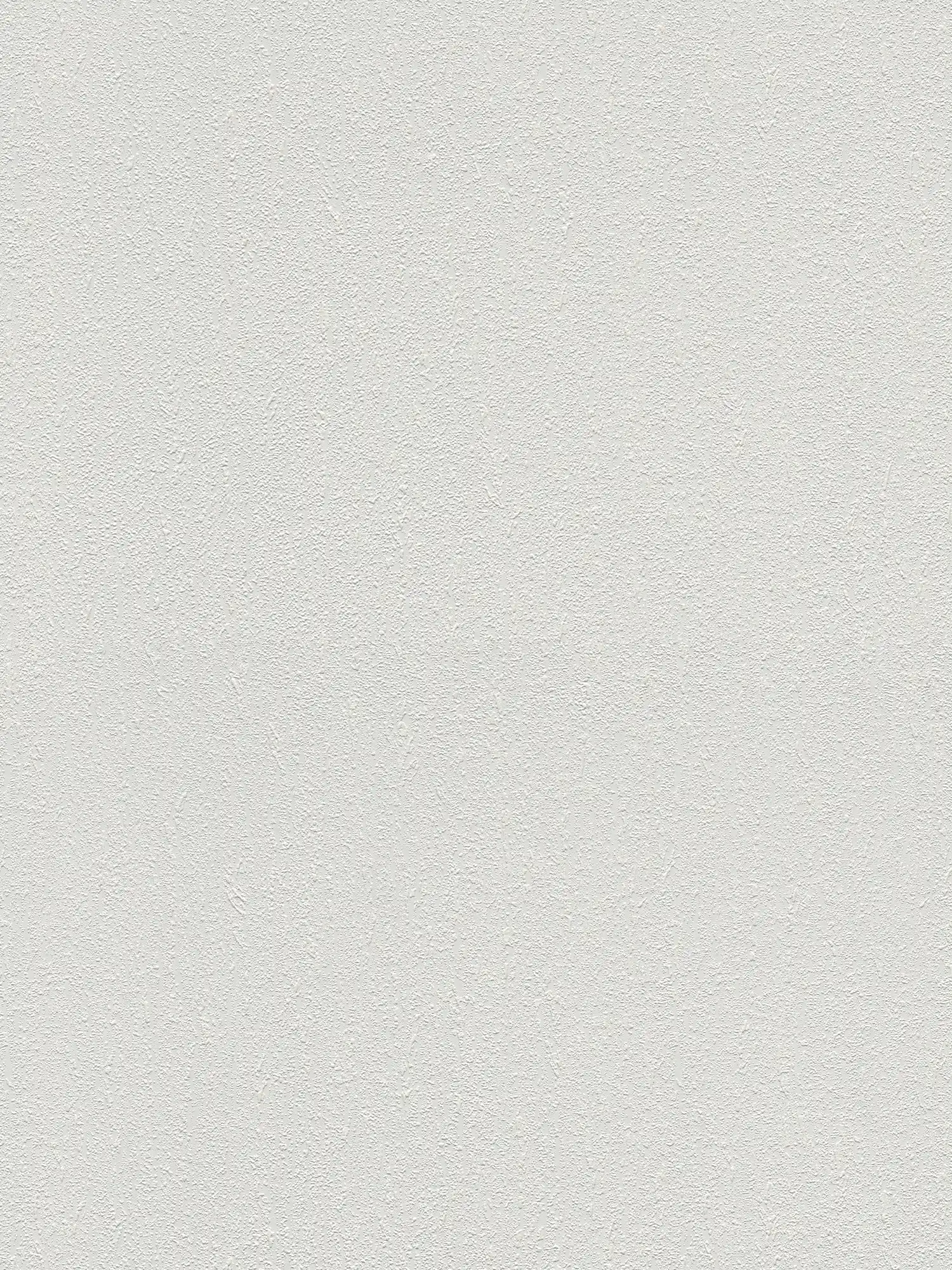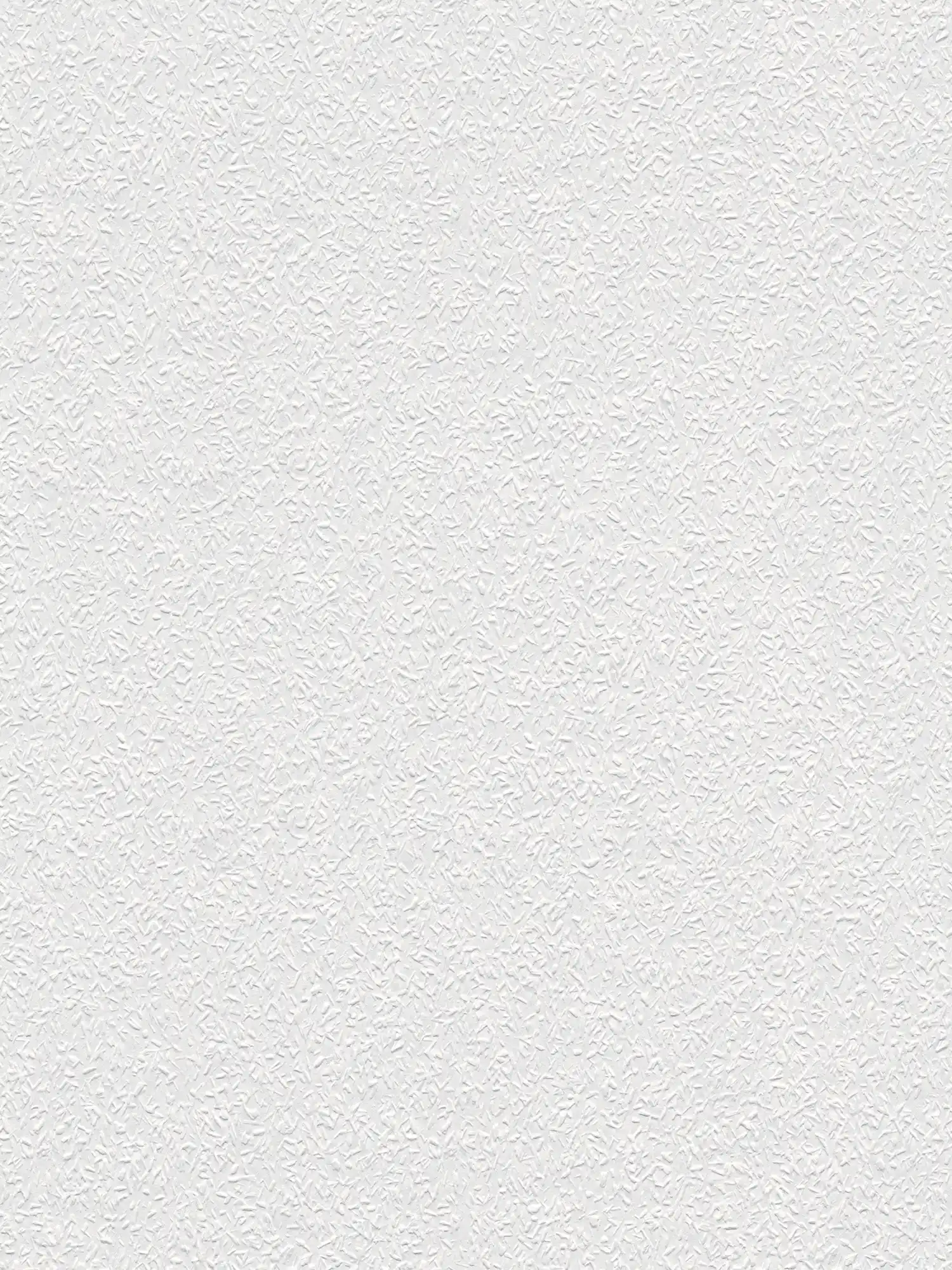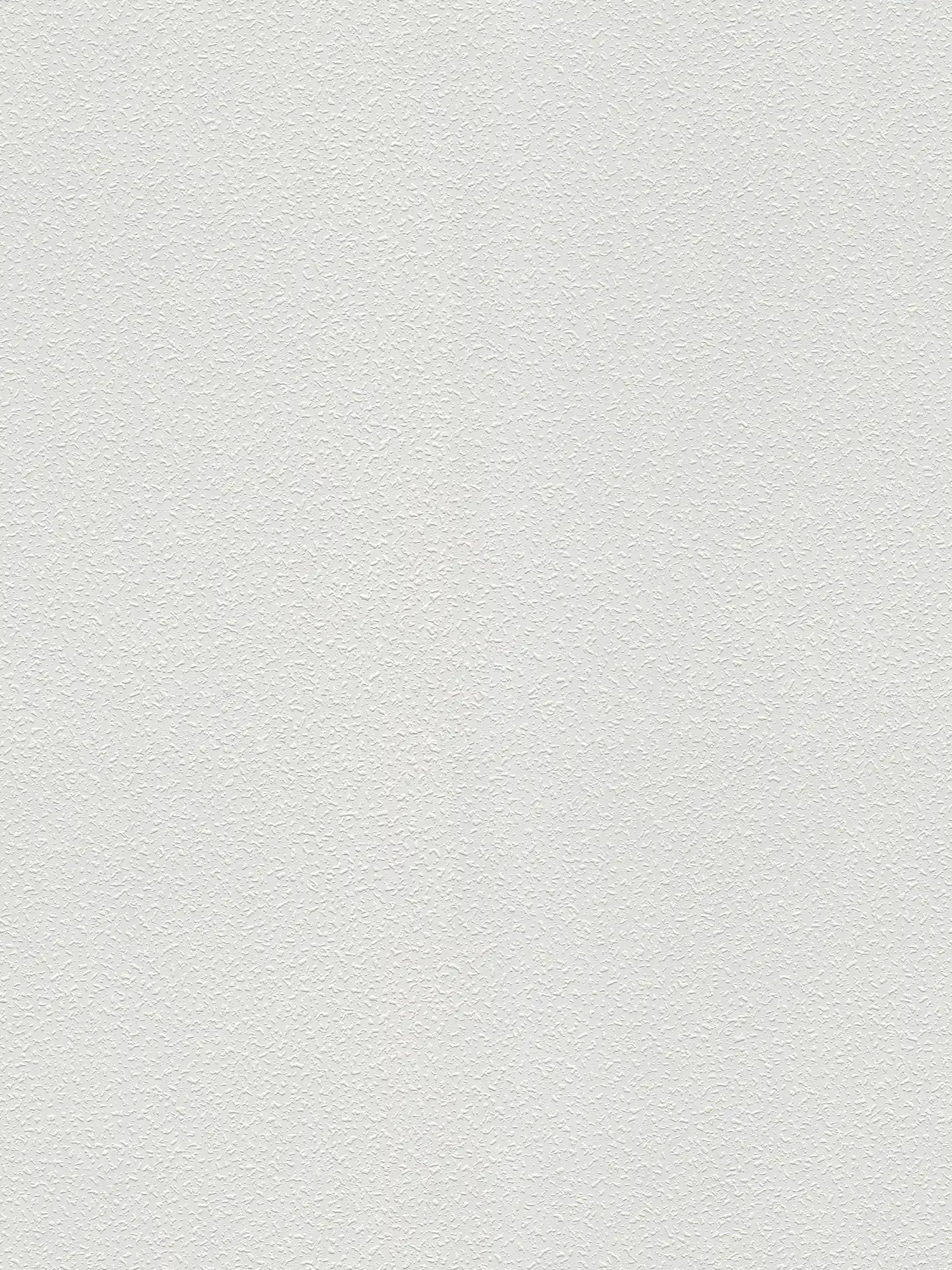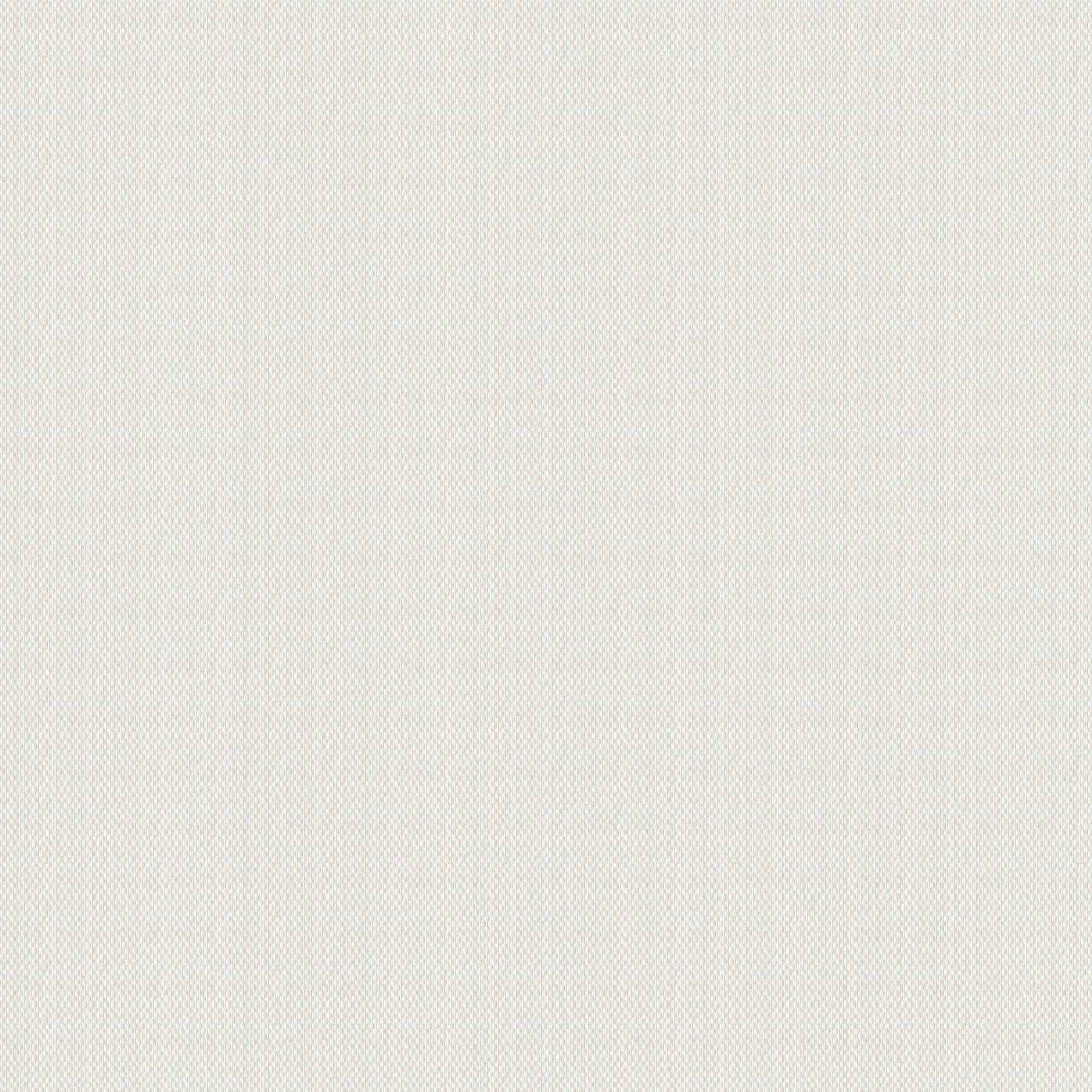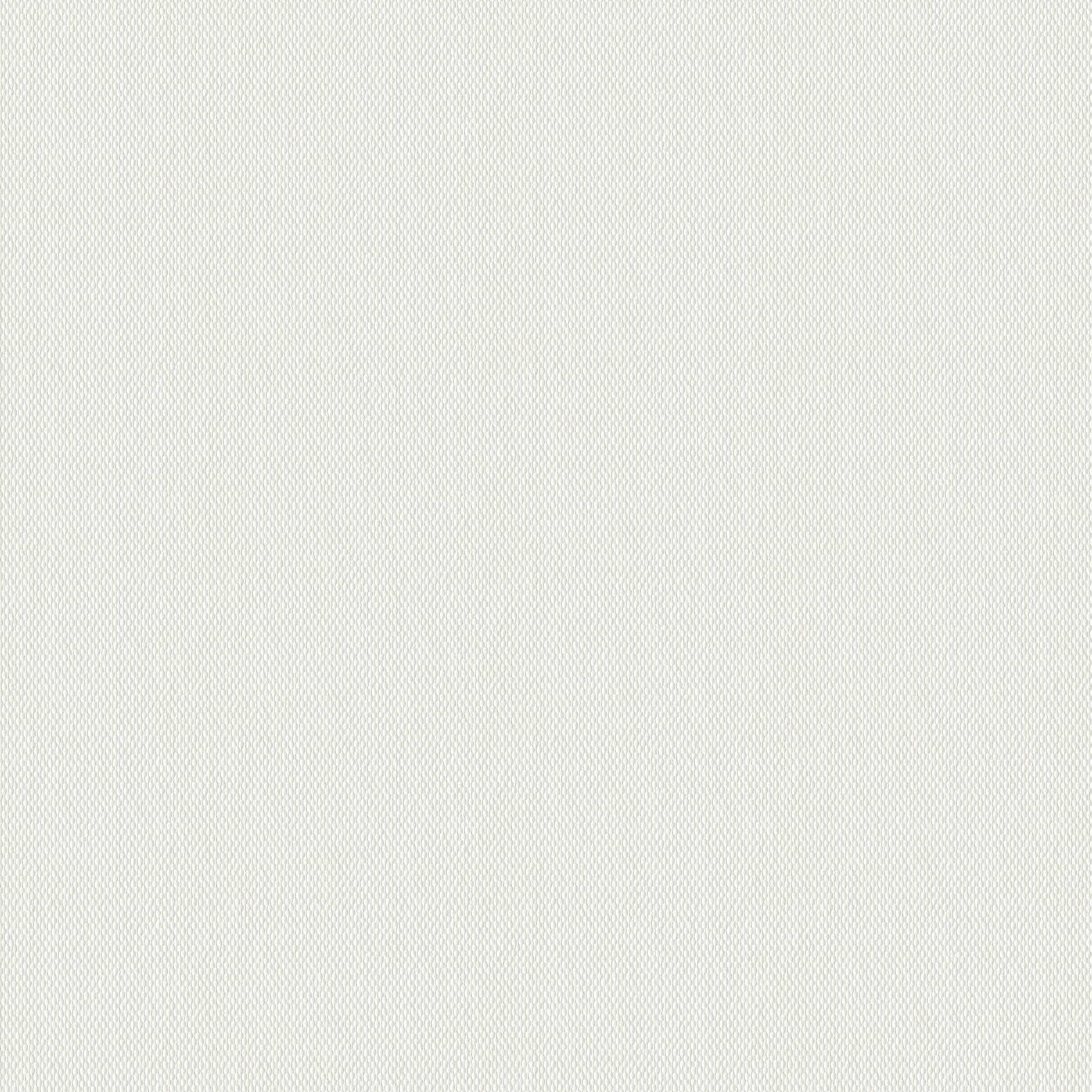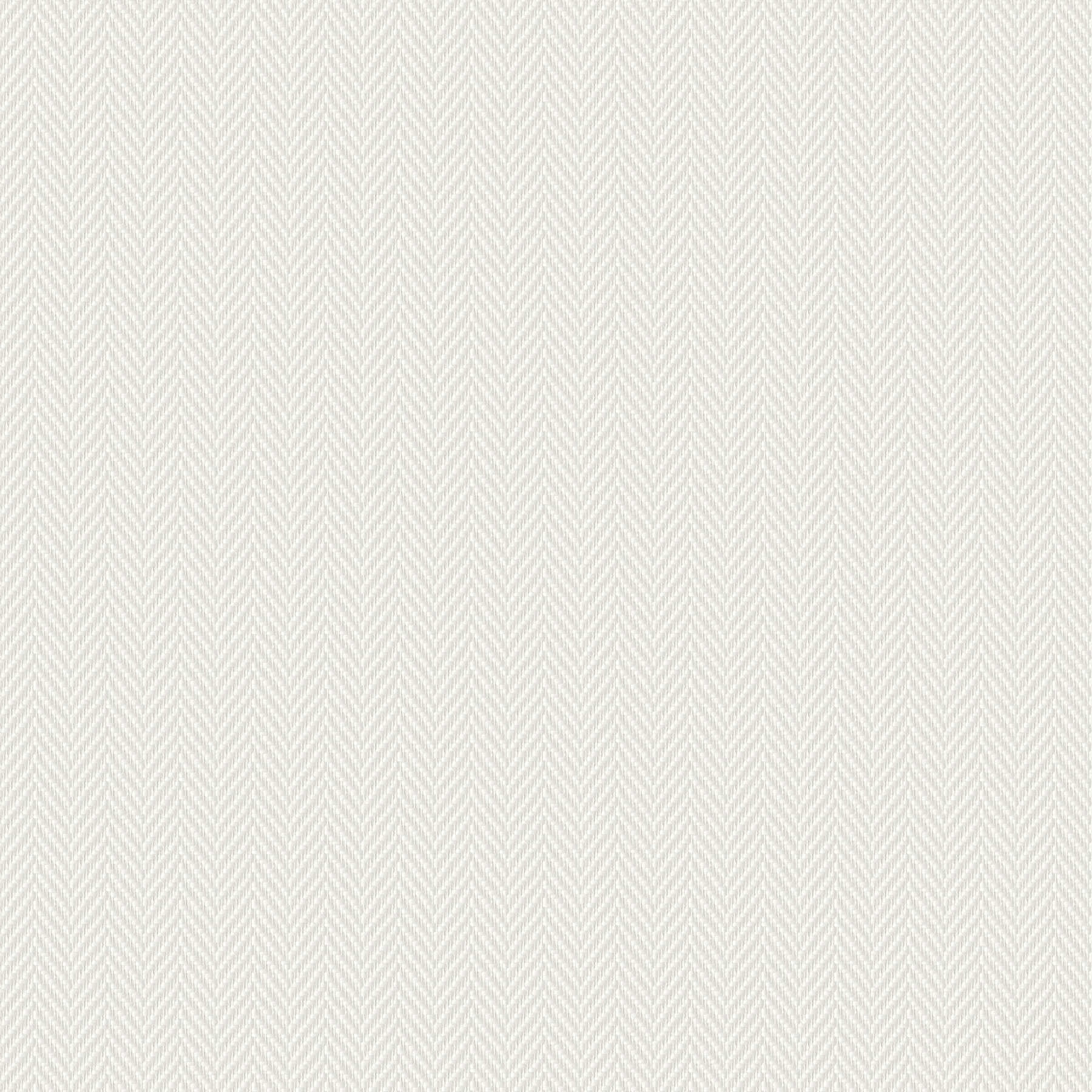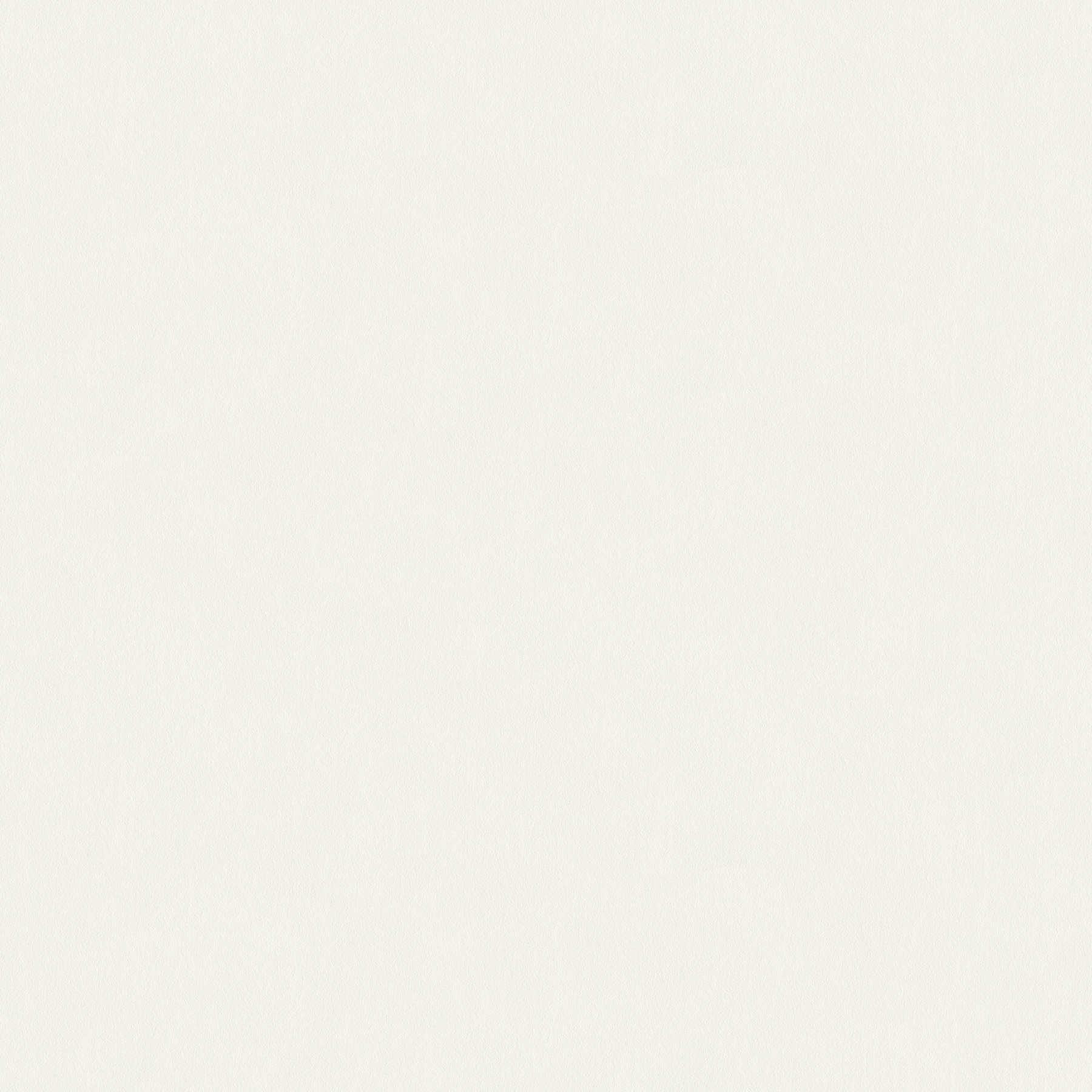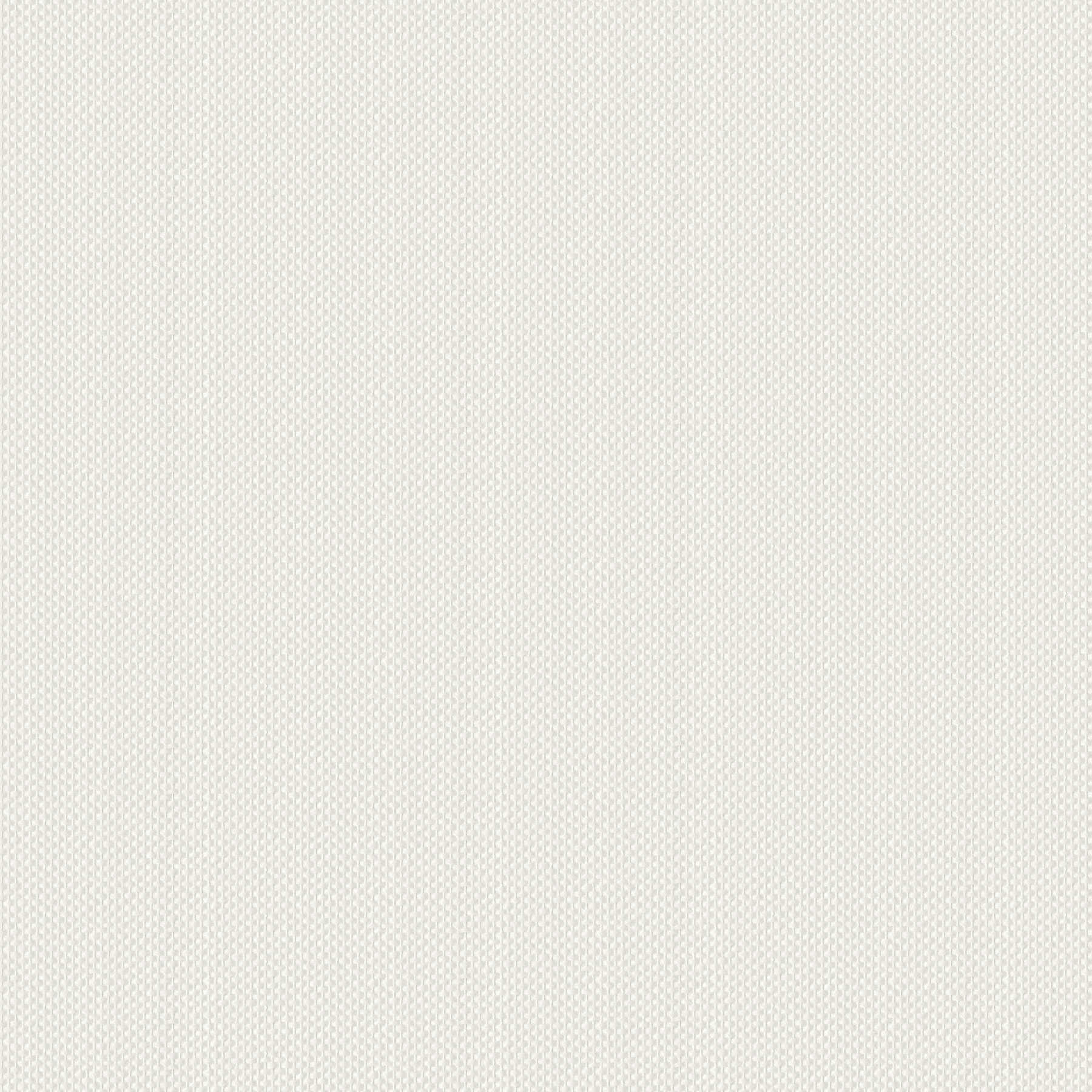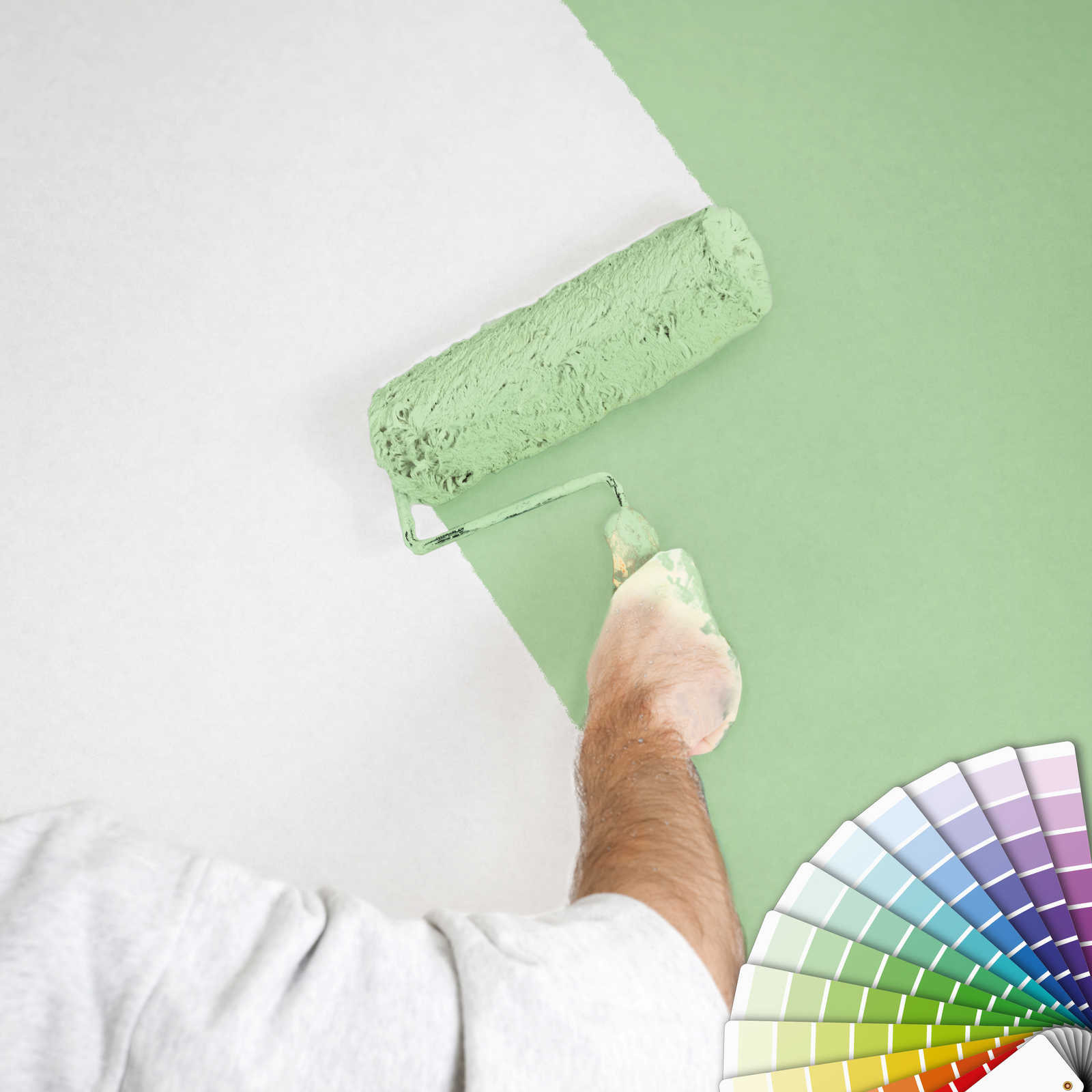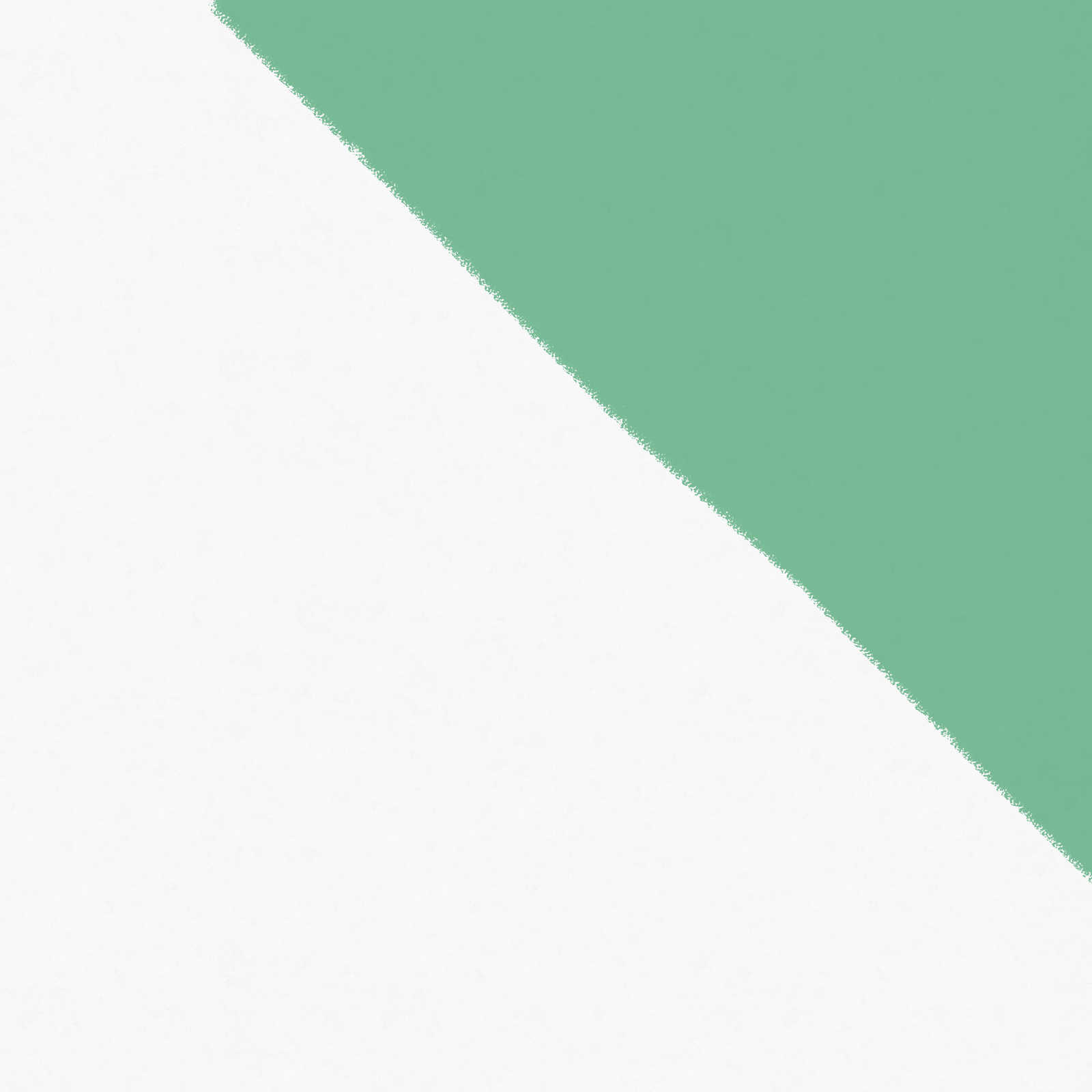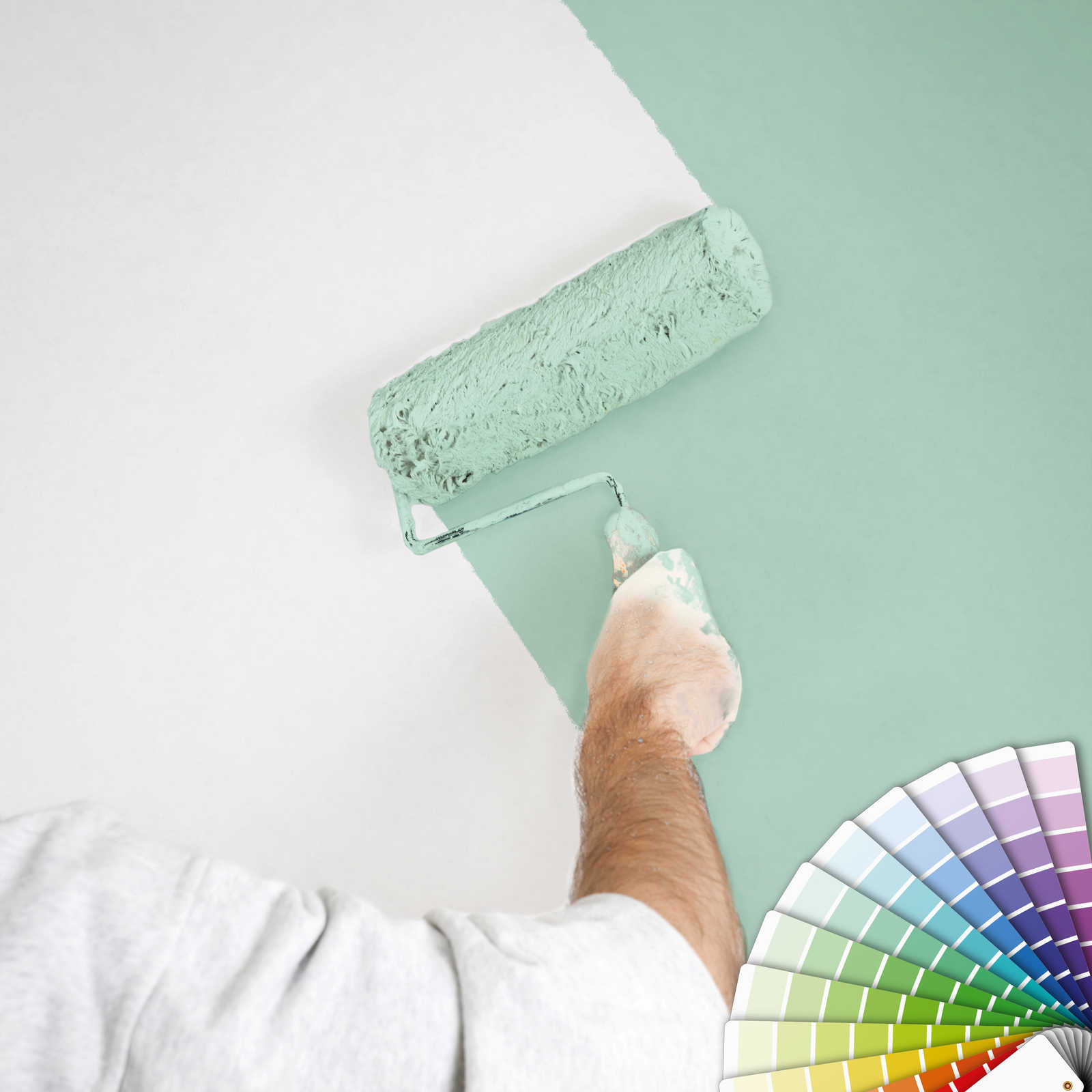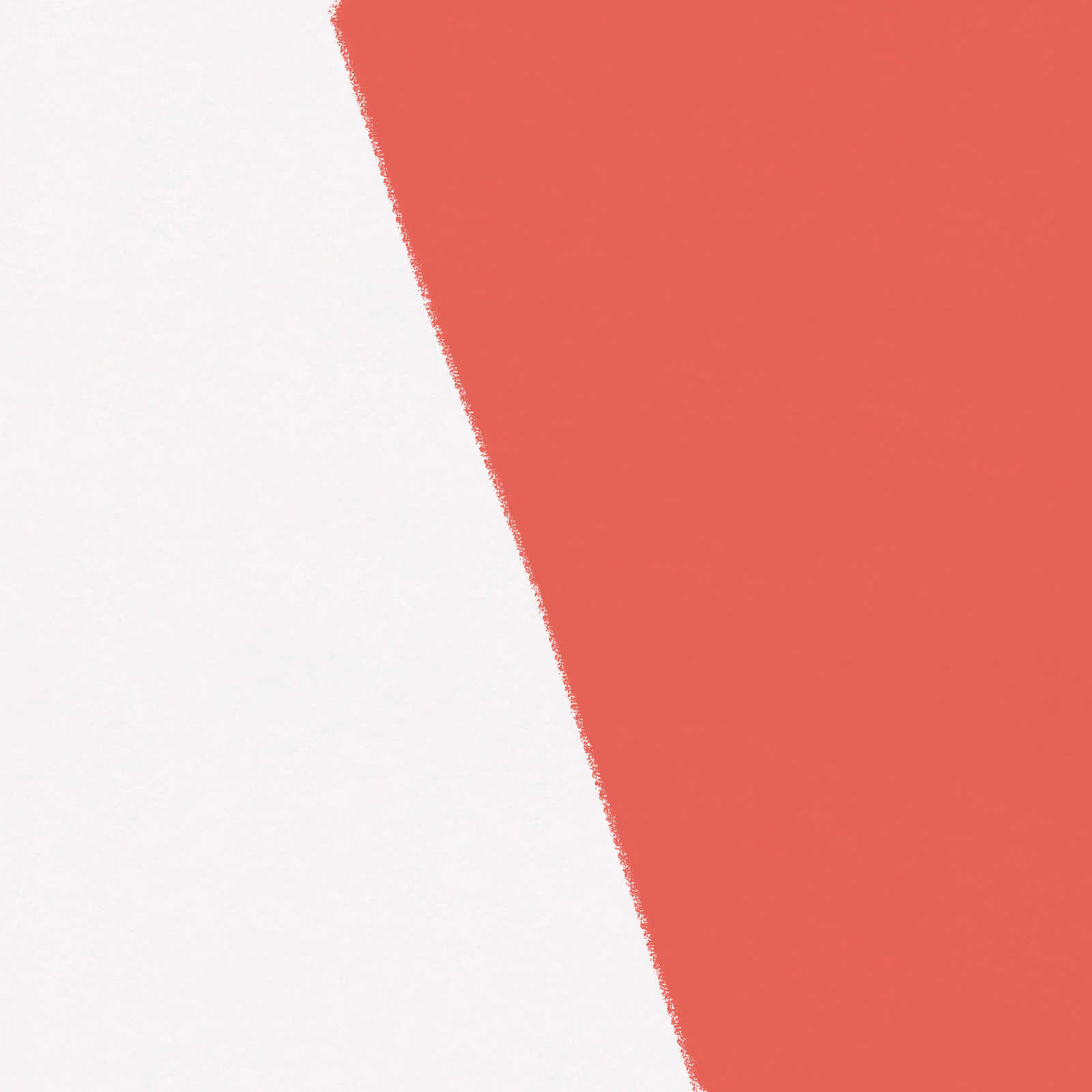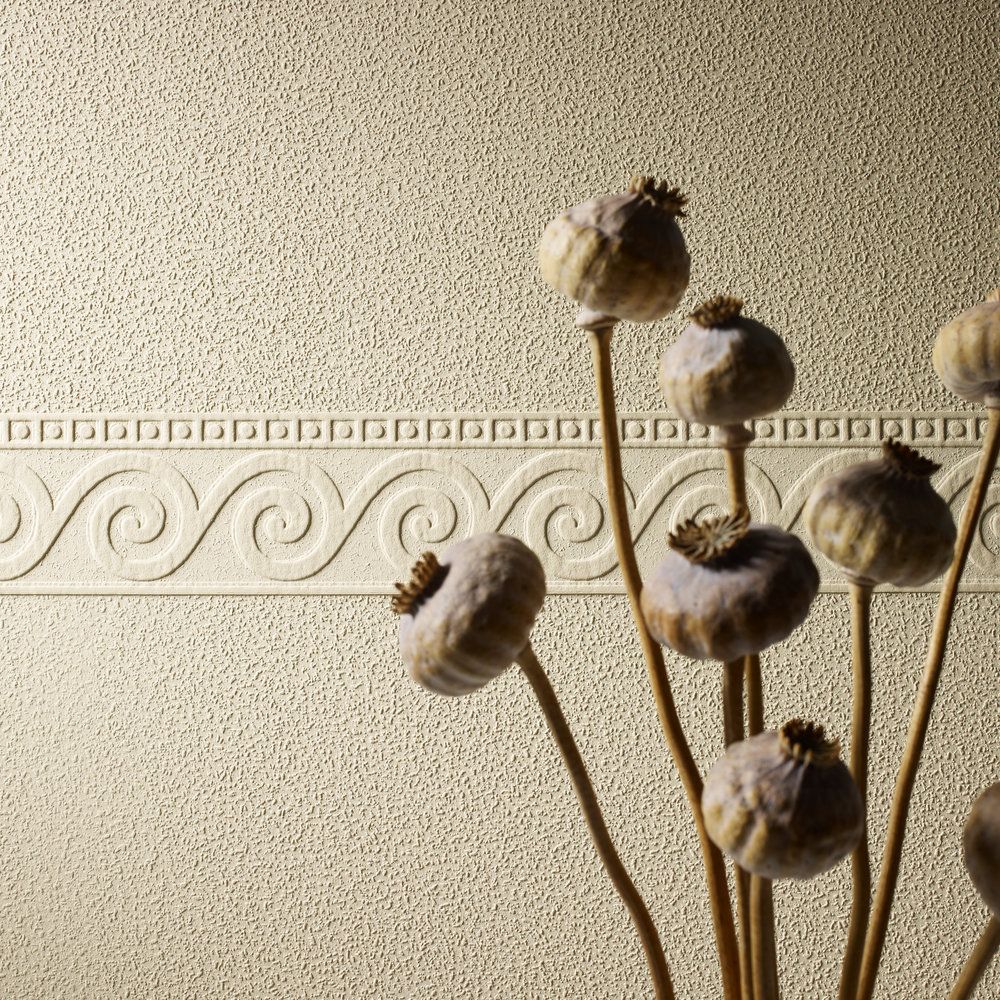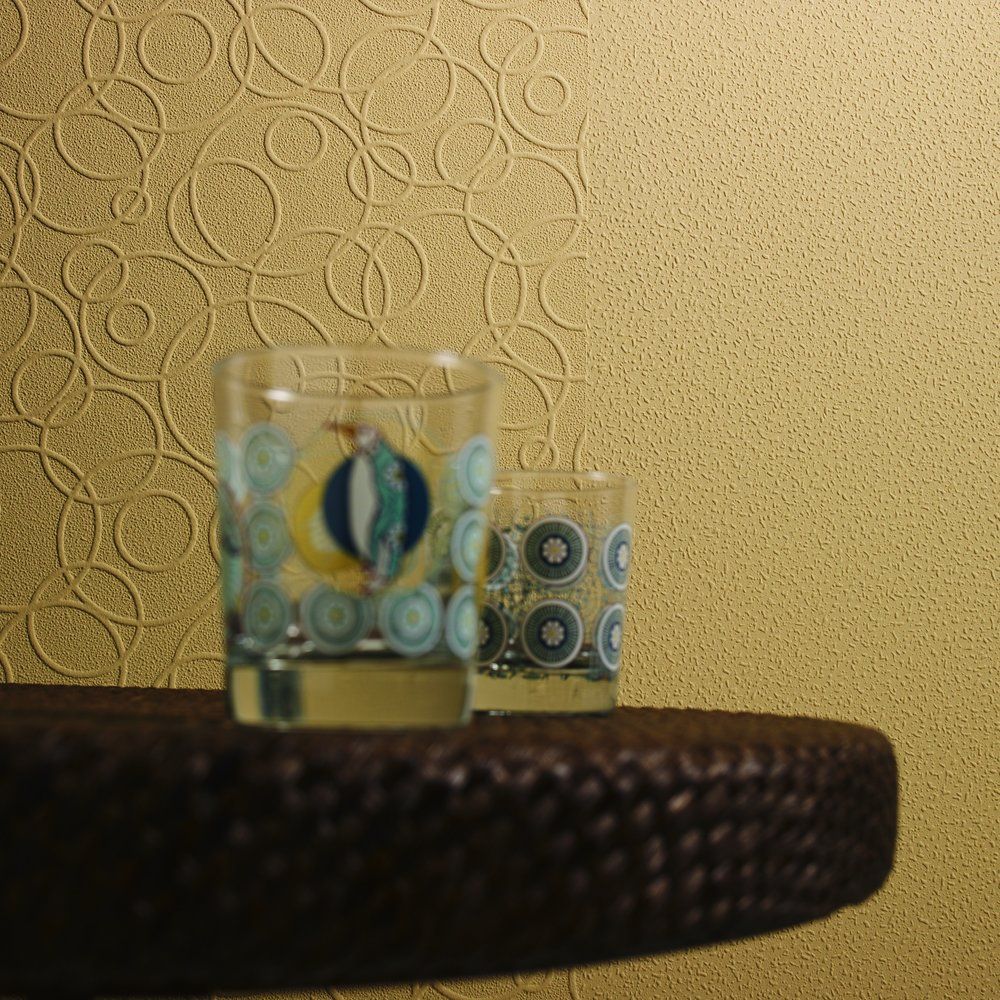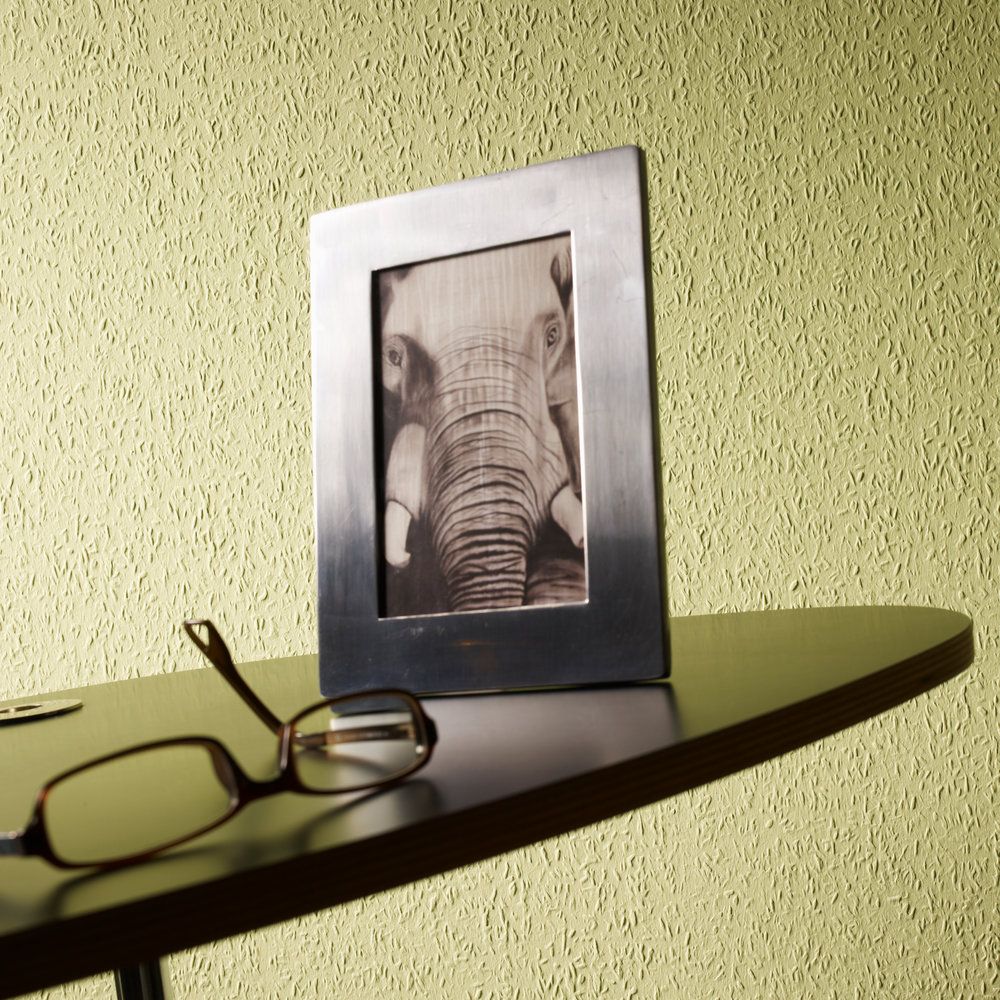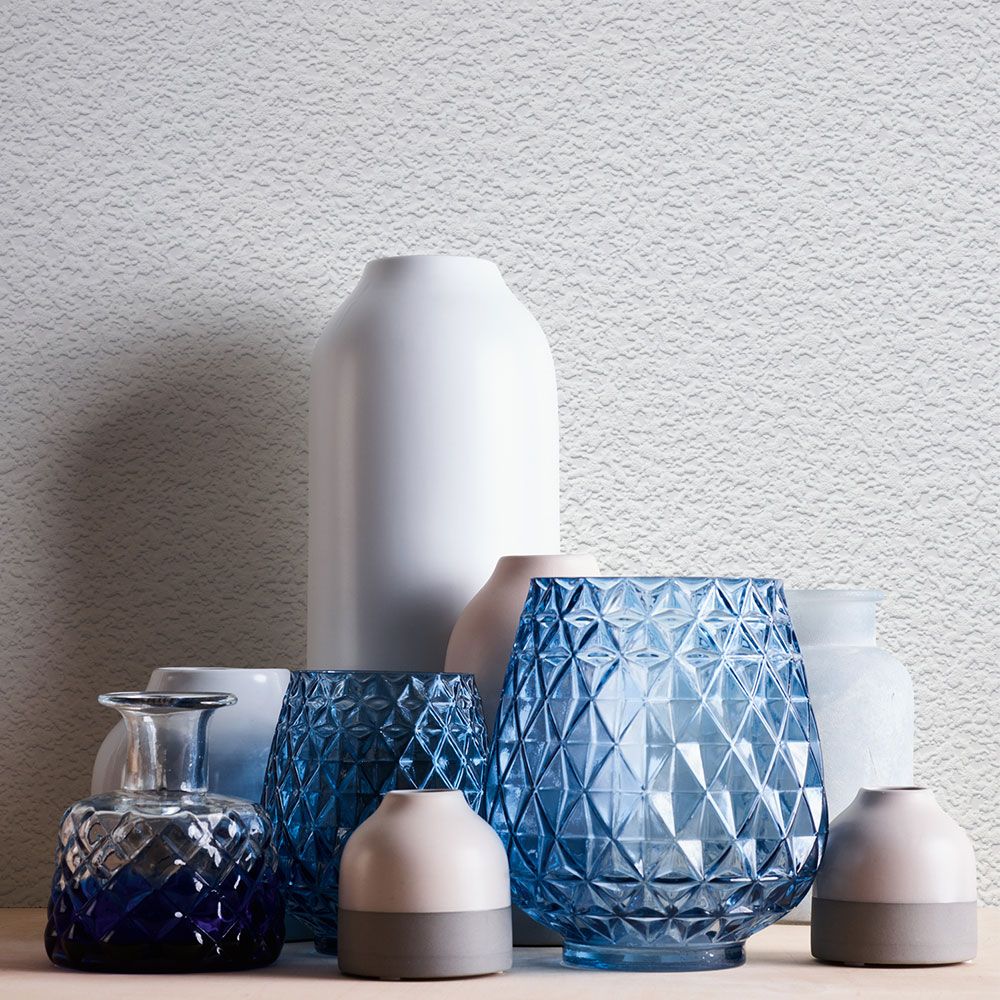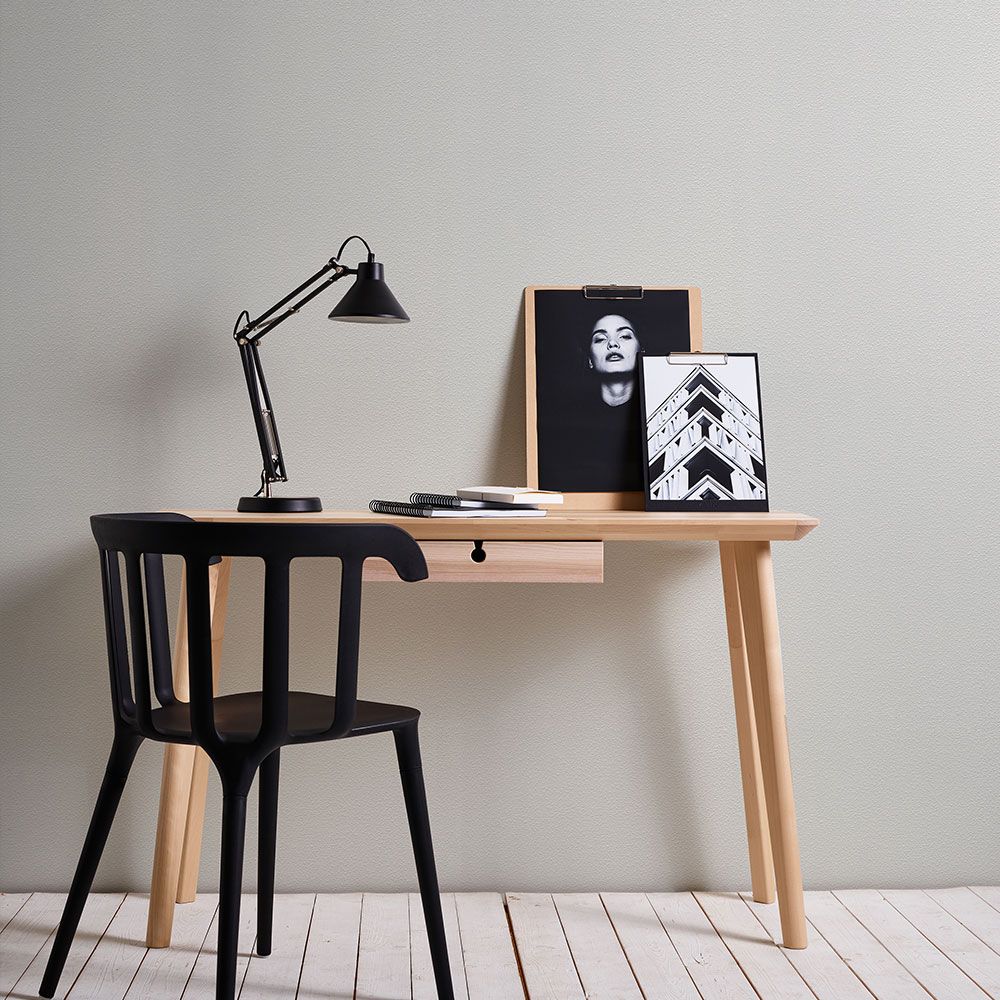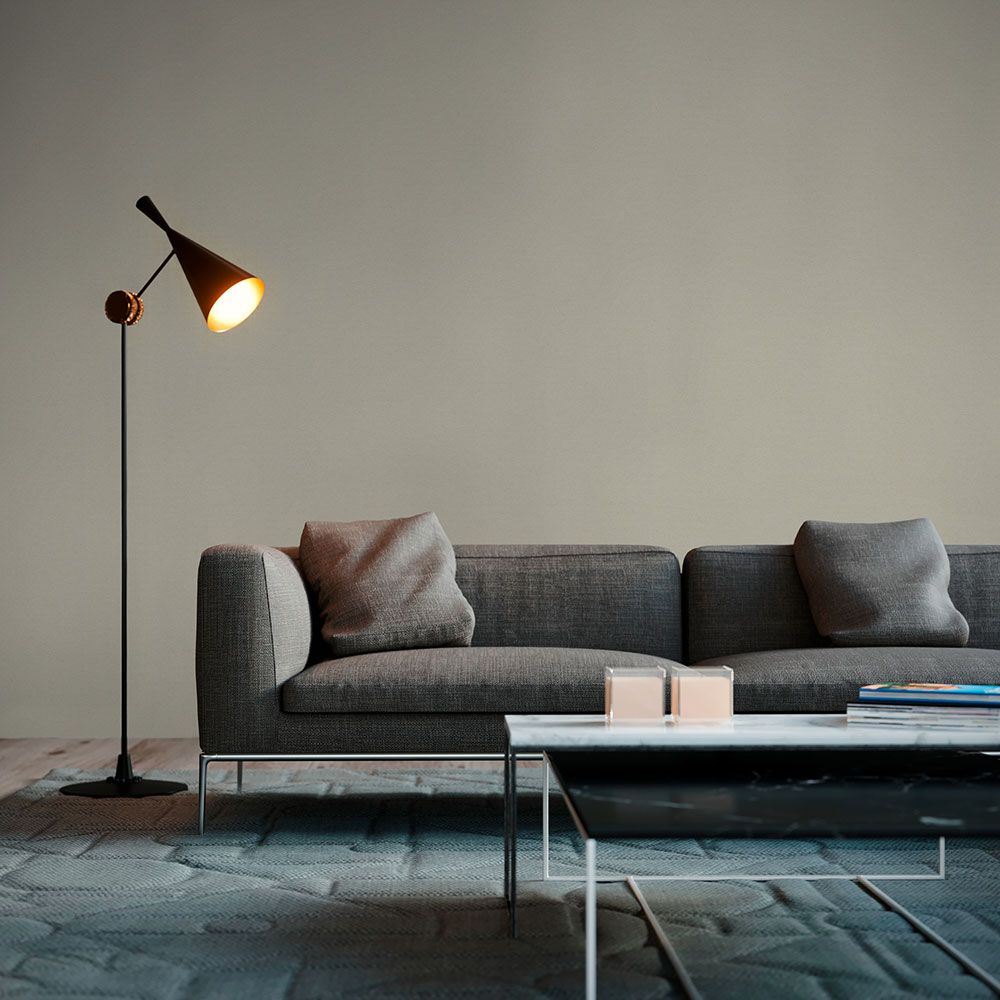Papel pintado de virutas de madera: ¡todo lo que necesita saber!
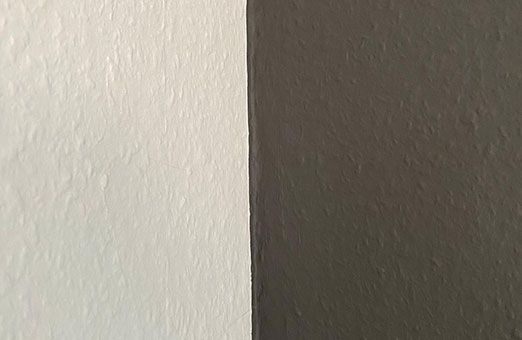
¿Qué es el papel pintado de virutas de madera y quién lo inventó?
La viruta de madera es uno de los muchos tipos de papel pintado que existen. Como su nombre indica, tiene una textura irregular y una superficie rugosa.
It was invented by pharmacist Hugo Erfurt (1834–1922). To be precise – in 1864. That’s a very long time ago.
Initially, woodchip wallpaper was designed to be a decorative paper for shop windows and a base paper for glue print wallpapers. In the 1920s, this type of wallpaper also became very popular for interior design purposes, too.
Escucha, aquí tienes información muy interesante:
- El papel pintado de virutas de madera se compone de 3 capas de papel en las que se integran fibras de madera. Esto les confiere la superficie que conocemos.
- Según el tamaño del grano de las fibras de madera, se crean superficies finas, medias o gruesas.
- Componentes: 90% de papel reciclado
- Adhesión: Técnica de la pasta
- Tiempo de remojo: 10-15 minutos
- Herramientas: Brocha para empapelar, rodillo para empapelar, rodillo para juntas
- Otros: debe pintarse

Papeles pintados con aspecto de virutas de madera
Le presentaremos las diferencias y ventajas de los tipos de papel pintado y le daremos consejos sobre la selección, elaboración y diseño de este papel clásico.
Cualquiera que conozca el papel pintado pensará inmediatamente en el papel pintado de virutas de madera. A algunas personas les encanta el diseño sencillo de este papel pintado clásico, y otras piensan que los revestimientos murales de este tipo son simplemente funcionales. Sin duda, este popular revestimiento mural es sin duda un diseño atemporal que puede diseñarse, mezclarse y combinarse con gran versatilidad.
Mientras que el papel pintado clásico con aspecto de virutas de madera se fabrica con papel y fibras de madera, también existen papeles pintados con aspecto de virutas de madera con soporte de papel o tela no tejida. En los papeles pintados con aspecto de virutas de madera no se utiliza madera, sino que se imita engañosamente la textura de las fibras de madera mediante pinturas de espuma y texturas. embossing. Visualmente, apenas hay diferencia entre ambos papeles pintados; sin embargo, los materiales que utilizan tienen características especiales que son clave a la hora de elegir el papel pintado adecuado:
Comparación directa
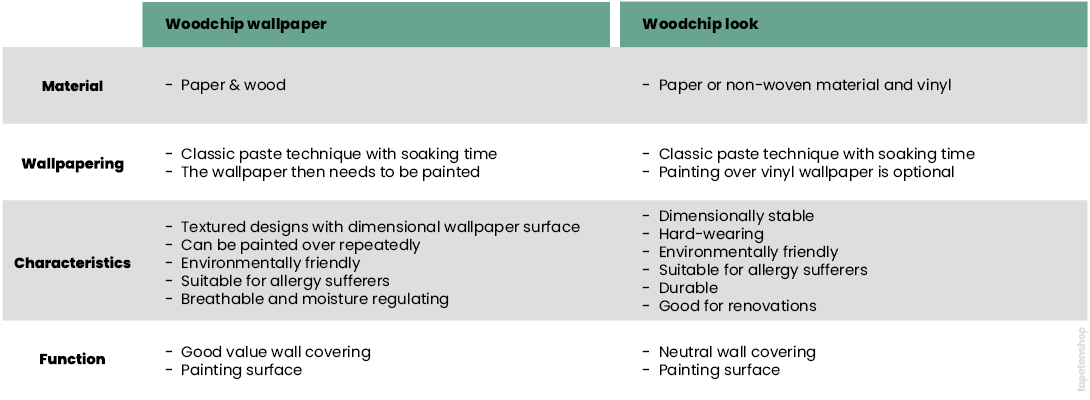
¿Qué ventajas ofrecen los papeles pintados de virutas de madera?
Son especialmente respetuosos con el medio ambiente y seguros para el ser humano. La materia prima reciclada del papel y la madera utilizada son materias primas ecológicas y renovables. El papel pintado es transpirable y tiene un efecto regulador de la humedad en la habitación, por lo que favorece y mejora el clima de la misma.
Como los papeles pintados de virutas de madera se pueden volver a pintar una vez colocados, son muy versátiles y se utilizan con frecuencia en pisos de alquiler y oficinas. Su diseño neutro combina bien con casi todos los estilos de interior y puede pintarse de blanco liso o de cualquier otro color, según sus preferencias. El papel pintado Classic Woodchip se pinta con pintura de emulsión sin disolventes.
¿Qué ventajas tiene el papel pintado con aspecto de virutas de madera?
La respuesta a esta pregunta depende principalmente del tipo de materiales que se utilicen. Y es que el papel pintado con aspecto de virutas de madera está disponible como papel pintado de papel con textura en relieve y como papel pintado no tejido con superficie de vinilo con estructura de espuma.
Por eso el papel pintado de virutas de madera es popular e impopular al mismo tiempo:
El papel pintado de virutas de madera sigue presente en muchos hogares, ya sea en las paredes o en el techo. Son una elección frecuente y popular, ya que su coste de adquisición es bajo, son fáciles de procesar y, además, son resistentes y respetuosos con el medio ambiente. Los papeles pintados de virutas de madera pueden pintarse varias veces y no pierden su textura.
Pero mucha gente se ha hartado de esta popular superficie, y las paredes lisas parecen mucho más modernas, ¿no es así? Este papel pintado ofrece muy pocas opciones de diseño, porque es mejor no empapelar sobre papel pintado de virutas de madera, ya que no le dará un resultado óptimo de empapelado. ¿Ha intentado alguna vez quitar el papel pintado de virutas de madera? Es un deporte en sí mismo..
Pero si necesitas hacerlo, aquí encontrarás algunos consejos sobre la forma más fácil de quitar este papel pintado:
- La mejor forma de quitar el papel pintado de virutas de madera es con humedad, así que hazte con un cubo con un poco de agua caliente y detergente líquido, o quizás un quitapapeles.
- Ahora puedes mojar el papel pintado con una esponja grande o una brocha ancha
- Si el papel pintado ha absorbido suficiente agua, puedes rasparlo de la pared con la ayuda de una espátula
- Si el papel pintado es demasiado persistente o notas -aargh- que se ha colgado capa sobre capa, entonces puede ayudarte un rodillo de púas. Antes de mojar el papel pintado, puedes pasarlo por encima: creará pequeños agujeros y el agua se absorberá mejor. Alternativamente, también puedes trabajar con un cúter: ¡pero hay que tener más cuidado!
- Antes de empapelar, hay que esperar a que las paredes se hayan secado.
- Antes de empezar, debería cubrir el suelo para ahorrarse trabajo innecesario de limpieza.
Papel pintado con aspecto de virutas de madera
This type of wallpaper imitates the style of woodchip wallpaper with an embossed pattern that gives the wallpaper its dimensional character. Like classic woodchip wallpaper, it is made of recycled paper but does not use wood as a raw material. The backing paper is environmentally friendly and good for the room environment, as it is penetrable and supports air moisture exchange. Paper wallpapers do not need to be painted after wallpapering, thus saving a second work process.
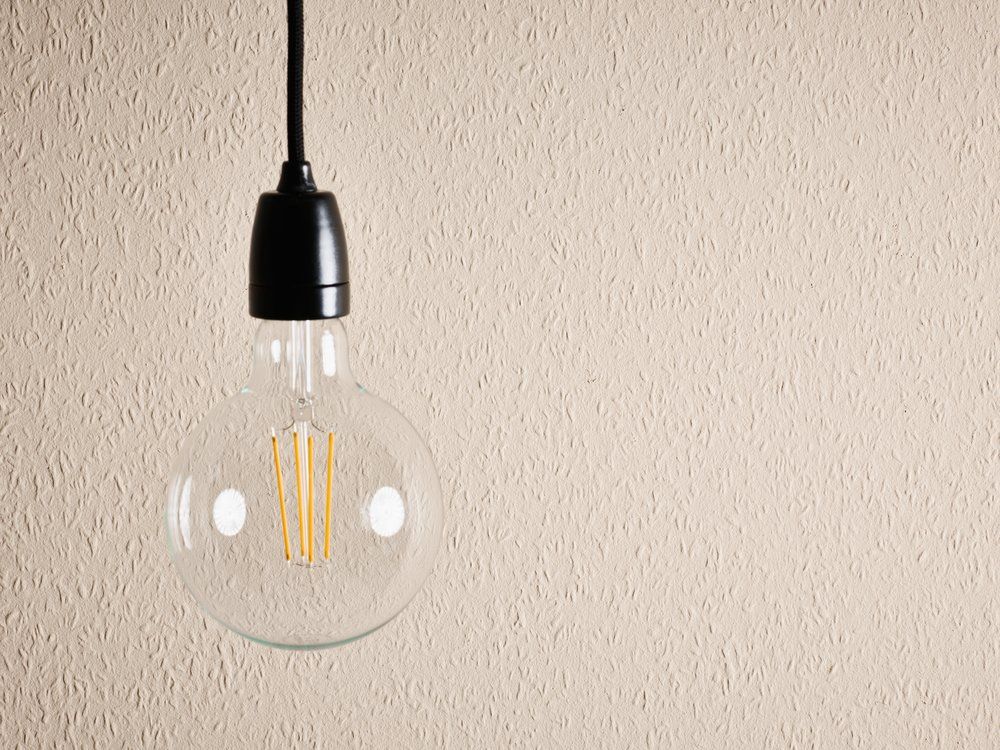
Papeles pintados no tejidos con aspecto de virutas de madera
Constan de un material de soporte no tejido dimensionalmente estable y una superficie de vinilo que tiene una robusta estructura de espuma, emulando el típico diseño de astillas de madera. Las ventajas de estos papeles pintados consisten en el procesamiento de los materiales, ya que los papeles pintados de tejido-no-tejido se colocan mediante la técnica de pegado en la pared. No requieren tiempo de remojo. Simply paste the wall, press on the wallpaper, let it dry – finished. Non-woven wallpapers do not warp and can be pasted seamlessly on joint. That’s why wallpapering is also simple for beginners and those without any practice and quickly achieves a clean result.
Non-woven wallpapers are robust, light resistant and resistant to washing. They do not fade, withstand light impact, and, if needed, any soiling can be cleaned off. This means that they can be used anywhere where long-lasting wallpaper is required, such as in kitchens, offices and hallways.
The practical non-woven backing has another advantage compared with paper, as non-woven wallpapers can be very simply removed from the wall during renovation work, with no need to spend time scraping it off.
Woodchip non-woven wallpapers are available in neutral white or colourful trendy colours, and they do not need to be painted afterwards. As an alternative, paintable versions can be used and individually designed.
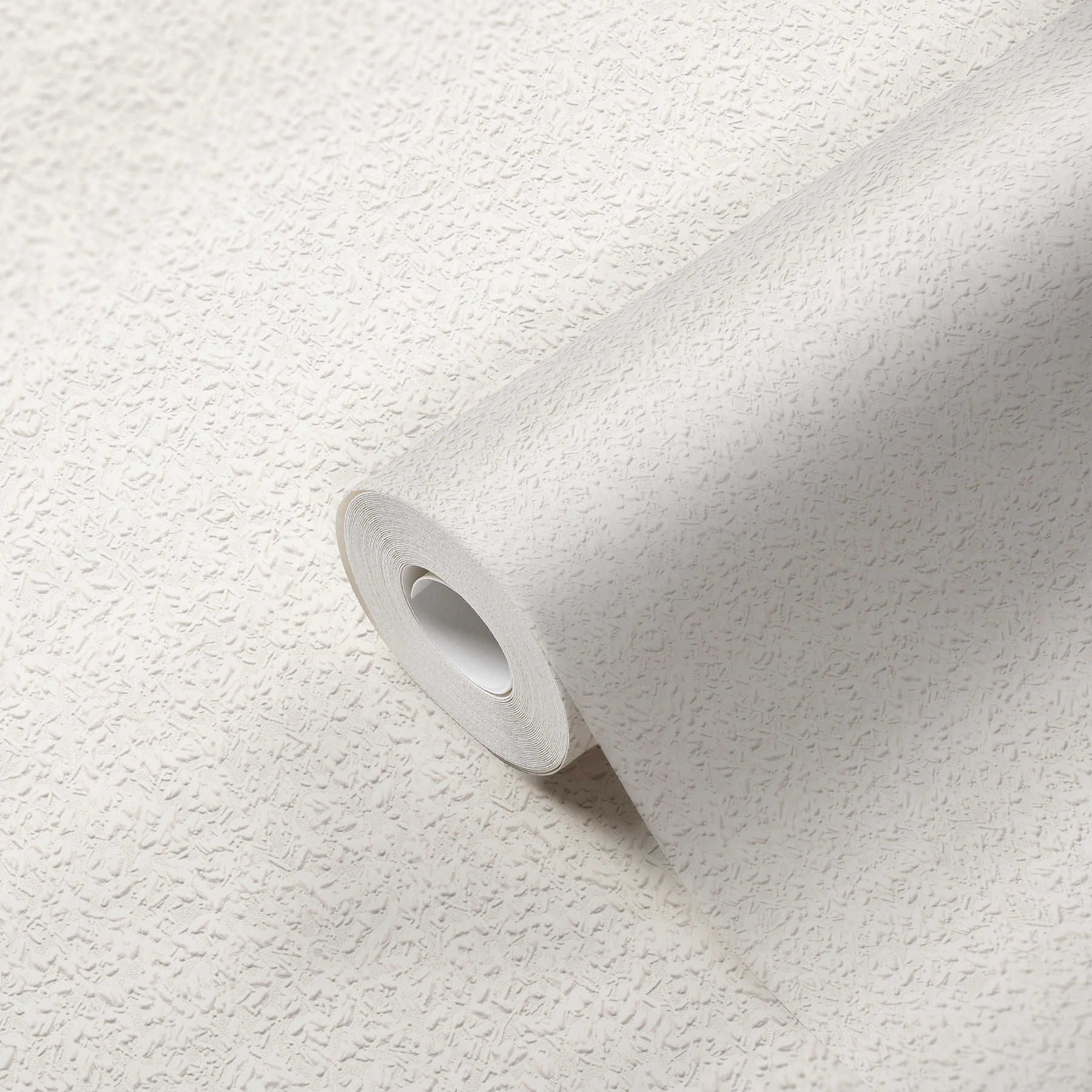
Instead, choose non-woven wallpapers or the following alternatives:
That’s because non-woven wallpapers are child’s play to hang using the paste-the-wall technique and can be removed dry with no residues. You can simply peel them off – no soaking or scraping required.
Which one is right for your wallpapering project:
The type of wallpaper you choose depends completely on what your requirements for the wallpaper are. Both versions provide you with a neutral wall design that you can design individually and which sets the stage from a decorative perspective.
Those who place particular value on environmental friendliness, are not afraid of the classic wallpapering technique and prefer to use individual colours for painting the wallpaper should opt for paper wallpaper. Paper wallpapers require more expertise for wallpapering, are therefore better value for money and are more environmentally friendly.
They are used a lot more frequently in homes in older buildings, in utility rooms or in the living spaces of people with allergies.
Woodchip-look non-woven wallpapers are quicker to hang and usually do not need to be painted on as well. Not only are they simpler to use, they also offer a clean solution the next time you want to change your wallpaper when the wallpaper can be easily removed. Paintable variations are just as flexible as paper ones and can be painted over several times.
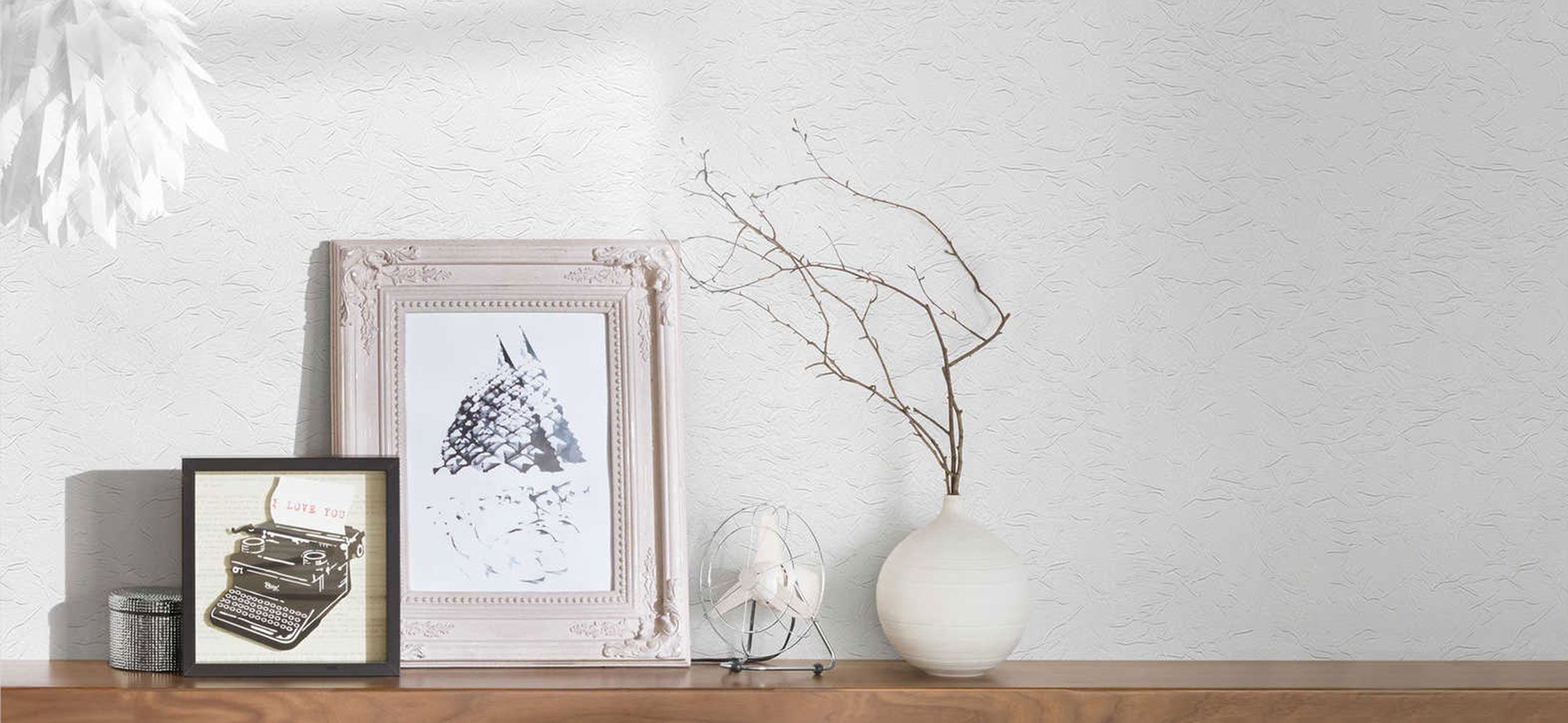
Textured effects for walls
Woodchip-look wallpapers are also included in the category of textured wallpapers, which, as the name suggests, have a surface texture. These effects can either be created through embossing or foam-like colour application.
The surface of the wallpaper provides the dimensionality of the material and gives the wall a varied texture which influences the colour perception and produces a subtle and striking pattern on the wallpaper.
In addition to woodchip wallpapers, paintable plaster-look and our 3D Meistervlies wallpaper collection (professional paintable wallpapers) with striking patterns also fall within the category of textured wallpapers.
Design classics for the living room
Almost everyone has lived with it, whether it was in their first rental flat, their office or in their own home – woodchip wallpaper is everywhere. This ubiquity makes it a go-to solution for many who are thinking of renovating.
The universal design is so popular that there are now countless versions of this wallpaper – modern non-woven wallpaper uses this decor and texture too.
Woodchip-look wallpapers combine the advantages of the existing material with the character of the wallpaper classic. You, therefore, get a wallpaper that can be used in all rooms in your home, and it is also simple to personalise and adapt to your respective style.
Neutral white remains the uncontested favourite for all commercial areas such as offices, hallways, warehouses and storage rooms. However, the woodchip-look wallpaper also retains its usual appearance in a modern living room or minimalist bedroom. It usually gets a more colourful look for children’s bedrooms; individual colours can be used here to express the tastes of these young residents. The advantage of painting over wallpaper is clear if you consider how quickly kids’ interests and styles change.
A favourite for neutral wall decor
What’s the secret of success when it comes to woodchip wallpaper and woodchip-look wallpaper? In this respect, two factors appear to have a crucial influence: the reasonable price and the timeless textured design.
Anyone who wants to design a living space cost-effectively and wants to keep the same wallpaper for a long time by painting over it will quickly find their favourite here. The discreet pattern of the textured surface looks neutral and timeless but looks more interesting than just a simple white surface. The three-dimensional texture of the wallpaper offers a discreet pattern when the light falls on it, which is emphasised when you paint over it with your favourite colour and the wall obtains a particular depth of colour.
Instead of colourful patterned wallpapers featuring trendy designs, lovers of woodchip-look wallpapers can create a neutral decor that fits with every interior design style. The wall is given an individual style with coloured paint, stencil techniques or by combining it with decor & furniture.
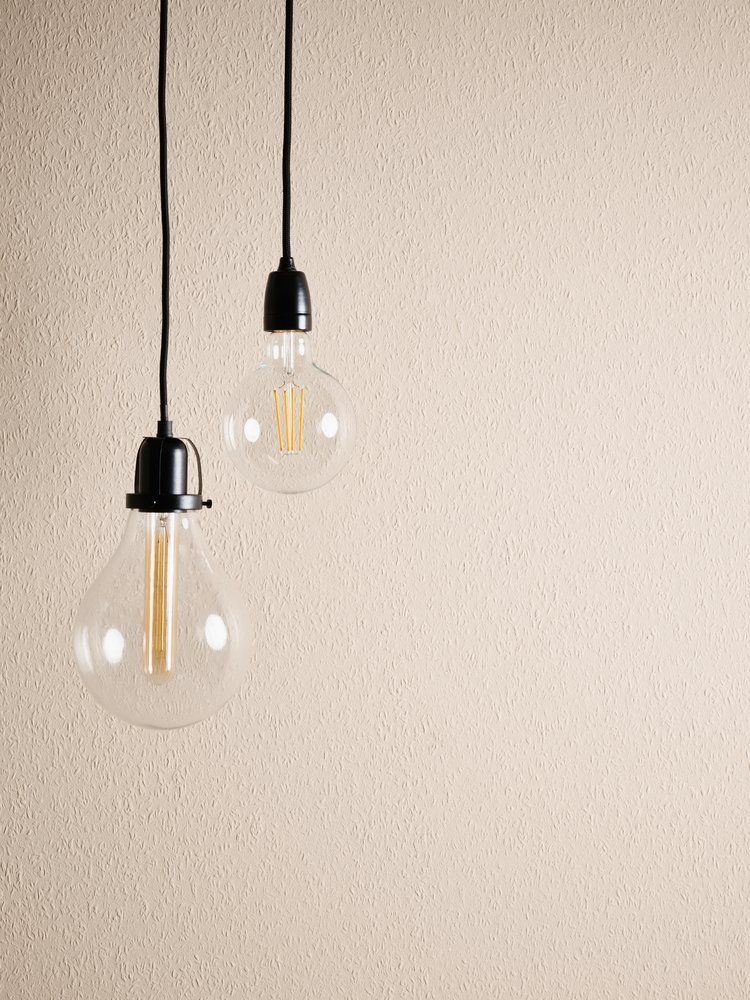
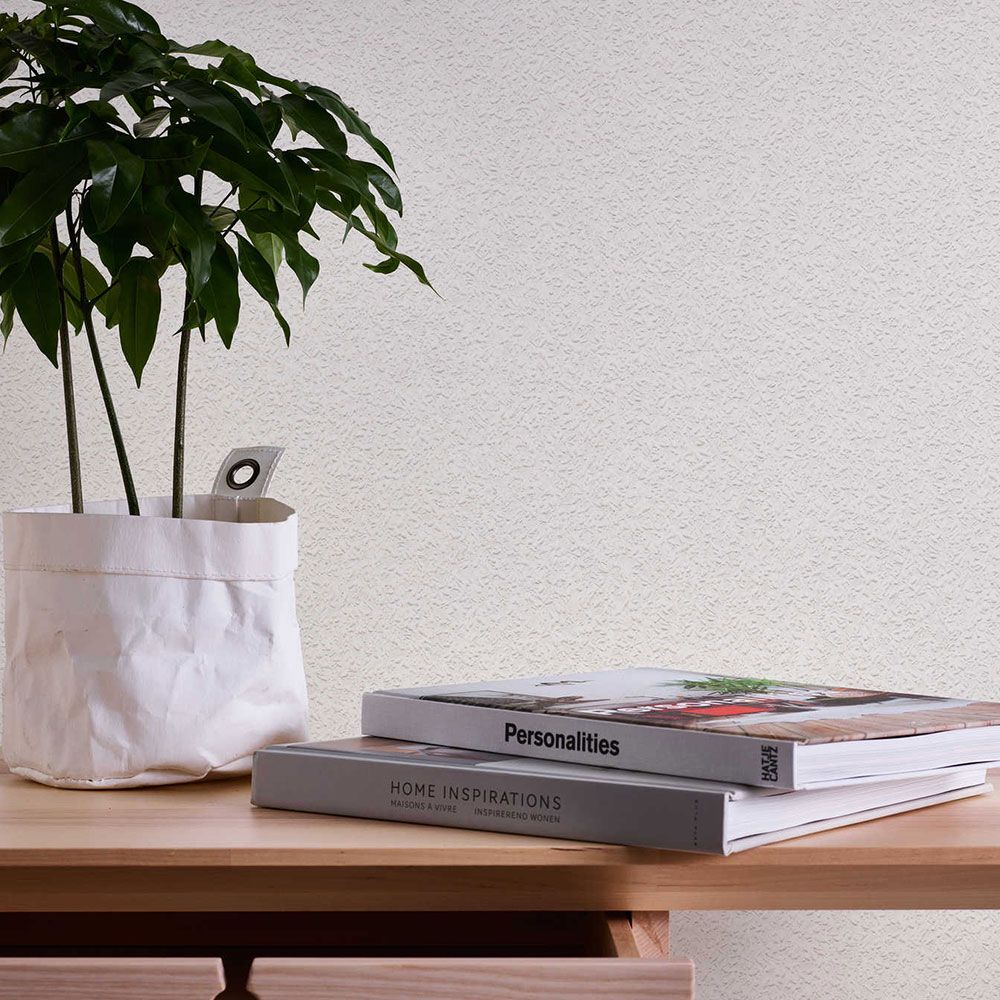
Right, well, let’s get back to the woodchip wallpaper we’ve just removed. You’ll have to dispose of it somehow...
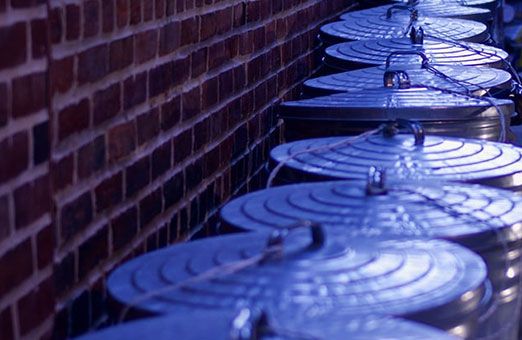
How do I get rid of woodchip wallpapers correctly?
Paper wallpapers, woodchip, non-woven wallpapers, vinyl wallpapers, satin and textile wallpapers belong in the household waste.
Please do NOT dispose of them in your paper recycling bin. This is because a lot of wallpapers are made of a combination of cellulose and synthetic fibres. They may also have surface embellishments and residues of paste on them. Used wallpapers should not be placed in the paper recycling bin.
If your rubbish bin is too small, you can also take your wallpaper to the local recycling facility. You should seek information about any costs/fees associated with this first. Some costs may apply.
If you have questions, please send us a message on Instagram. Our Instagram handle is @newwalls. Alternatively, you can send your enquiry via snail mail. No, don’t be silly – simply send us an email at service@new-walls.com as an alternative.

